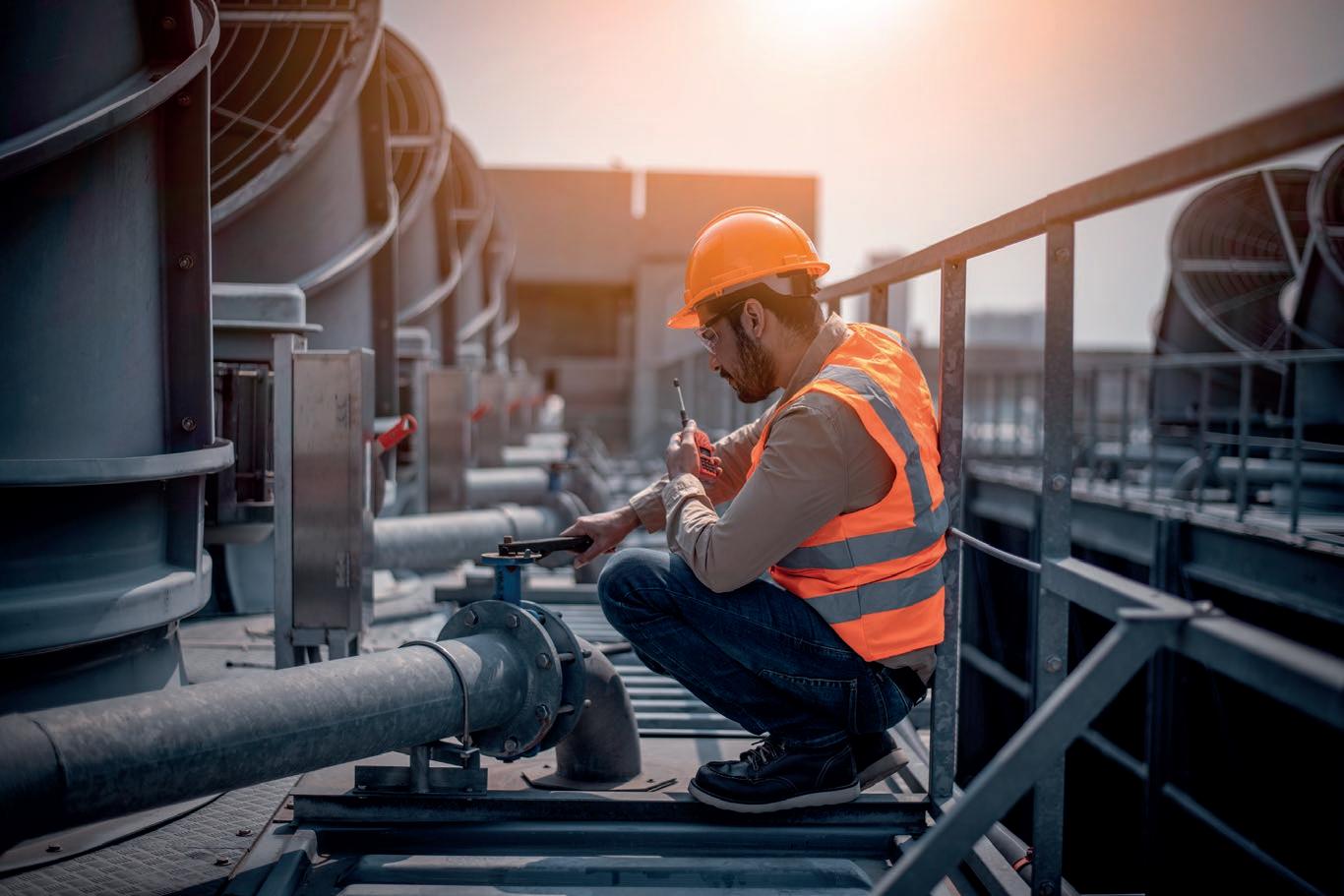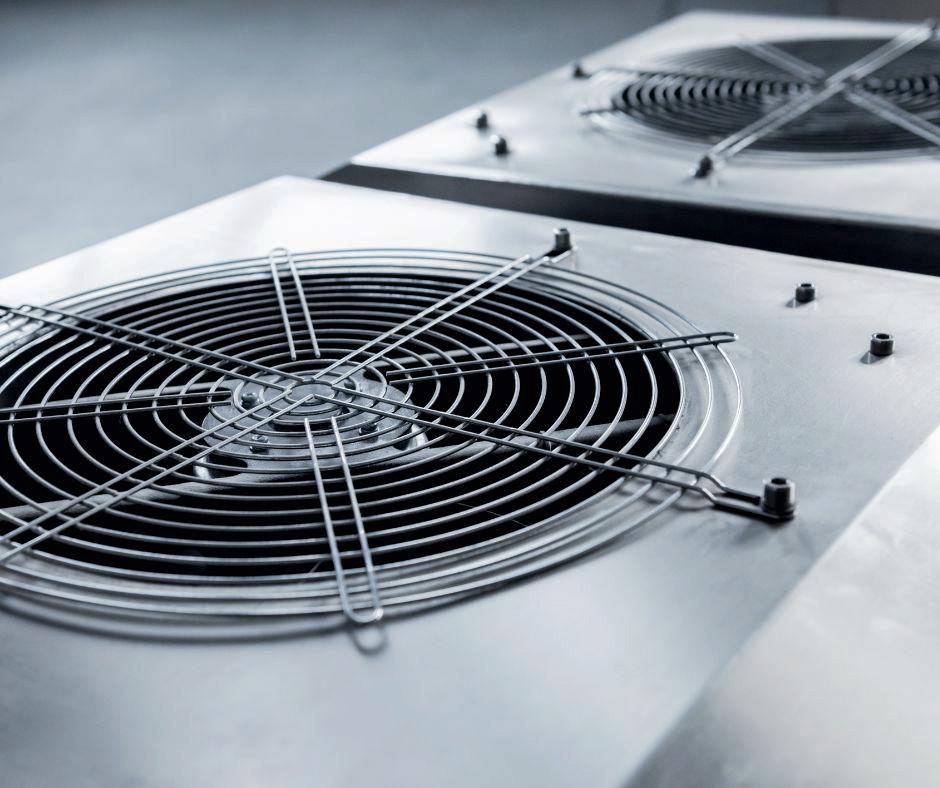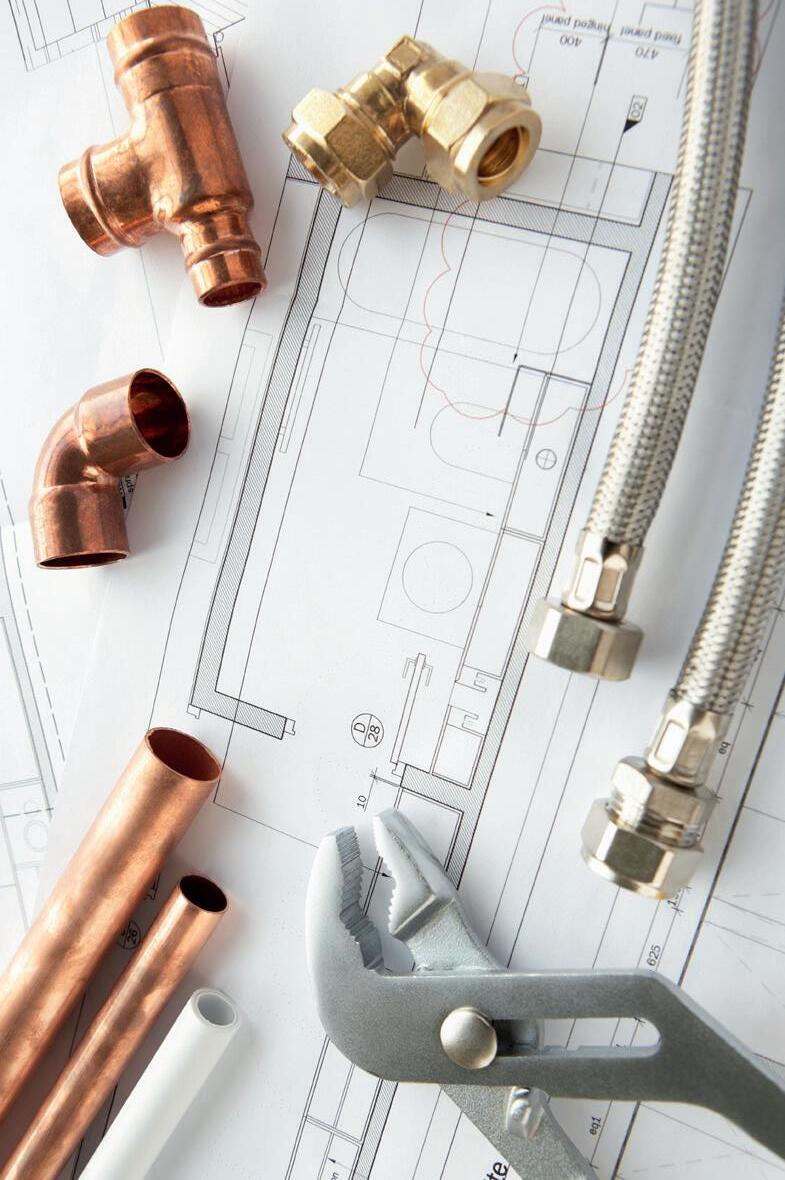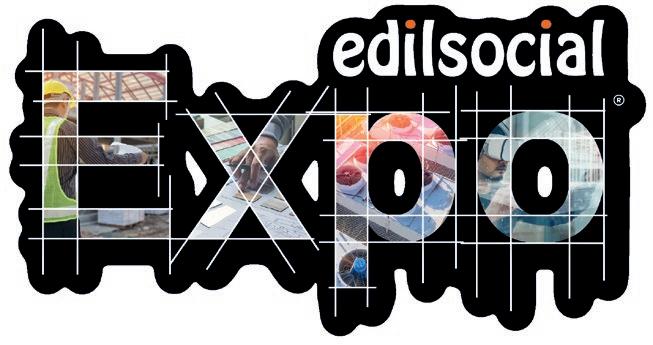

ADHERENCE TO BS 476/24:



ADHERENCE TO BS 476/24:
TESTING LABS CARRY THE RESPONSIBILITY OF PROPERLY REPORTING ON INTEGRITY OF FIRE-RESISTING DUCTS

Dr Rajendra Shende, former Director, UNEP
Building Tracing & IEQ
Jeremy McDonald, Principal, Guth DeConzo Consulting Engineers
Defeating ‘pay when paid’ clauses in sub-contracts
Antonios Dimitracopoulos and Andrew Raof of BSA Ahmad Bin Hezeem & Associates LLP
Implications of ASHRAE 90.1:2023
Dalip Singh, Senior Technical Analyst,AHRI MENA
BIM and the perils of outsourcing
Kandasamy Anbalagan, Managing Partner, Proleed Engineering Consultants

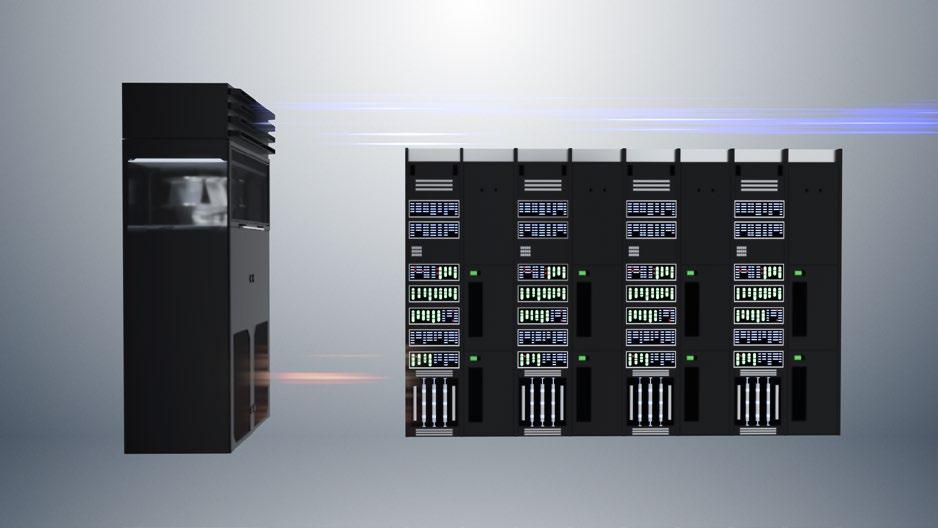
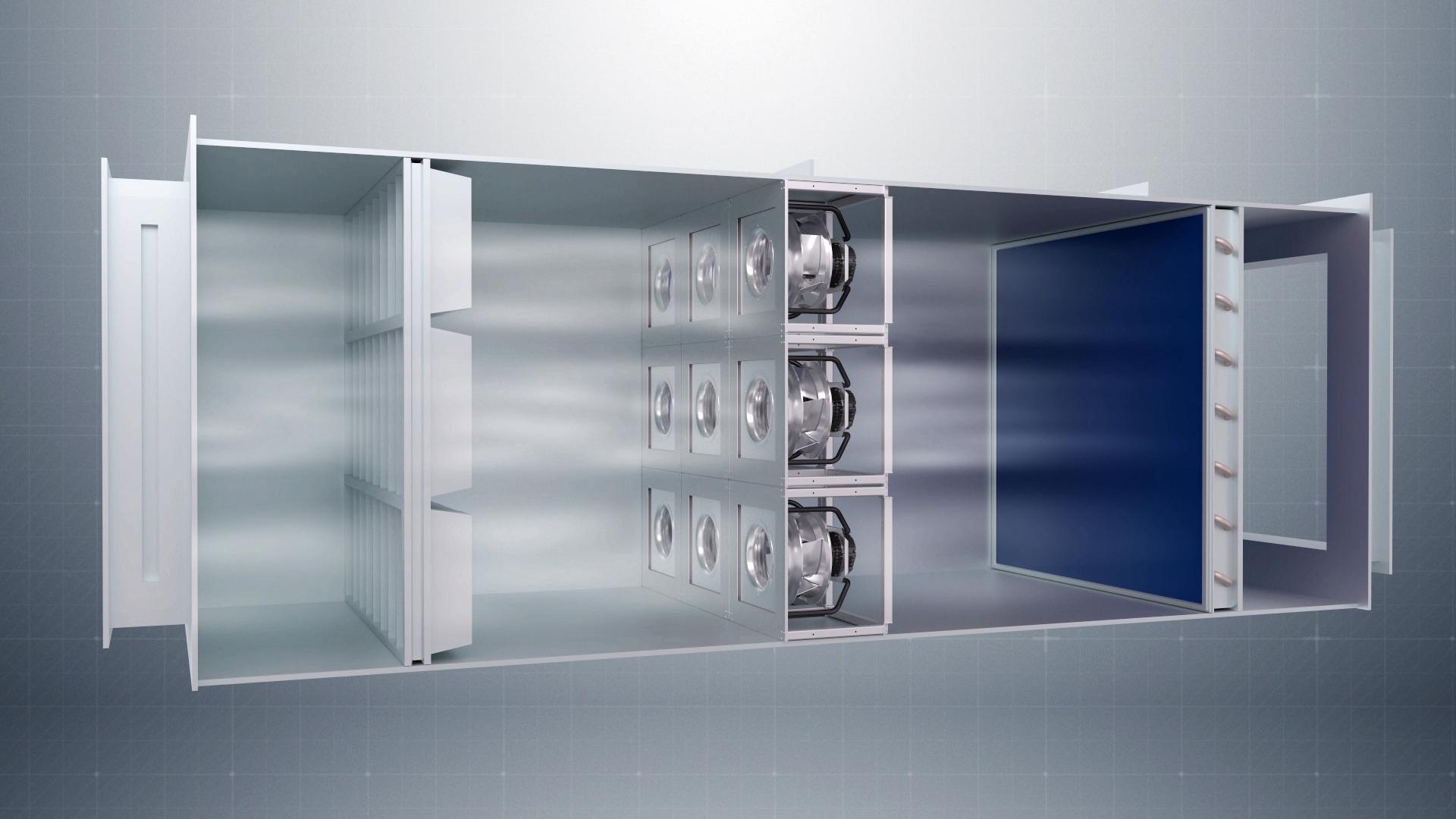
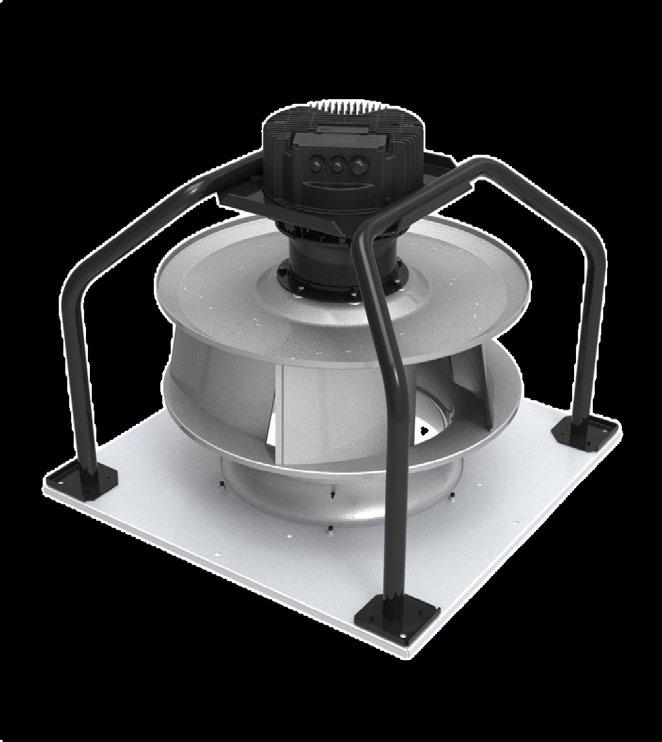

14 page
COVER STORY
Adherence to BS 476/24: A matter of saving lives
Testing labs bear greater responsibility, in the face of instances of some manufacturers of fire-resisting ducts prioritising cost-cutting over quality

COP28: CLIMATE ACTION ON ALL FRONTS – EVERYTHING, EVERYWHERE, ALL AT ONCE
Though the IPCC’s AR6 speaks of a climate time-bomb that is ticking, it serves as a how-to manual for defusing it, says Dr Rajendra Shende, former Director, UNEP
BUILDING TRACING AND IEQ: CLIMATE CHANGE Vs CLIMATE CONTROL
A classic example of “The law of unintended consequences”, says Jeremy McDonald, Principal, Guth DeConzo Consulting Engineers
note | TRANSITIONING FROM BEING MEP MODELLERS TO SOFTWARE APPLICATION HANDLERS
DEFEATING ‘PAY WHEN PAID’ CLAUSES IN SUB-CONTRACTS
Antonios Dimitracopoulos and Andrew Raof, of BSA Ahmad Bin Hezeem & Associates LLP, hold court on the crucial topic
IMPLICATIONS OF ASHRAE 90.1:2023
The 2023 version of ASHRAE 90.1 focuses primarily on improving energy efficiency in commercial buildings, elaborates Dalip Singh, Senior Technical Analyst, AHRI MENA
BIM AND THE PERILS OF OUTSOURCING
Kandasamy Anbalagan, Managing Partner, Proleed Engineering Consultants, writes on why the modelling skills of design engineers are given more weight than their engineering capabilities
UP, UP AND AWAY
The numbers support the ascendancy of the air treatment market – for more reasons than one
SCANDINAVIA
Decarbonising of buildings and improving occupant health are part of a regional consciousness, backed by government regulation and an optimal atmosphere for product development
Co-Founder & Editorial Director Surendar Balakrishnan surendar@cpi-industry.com
Editor Surendar Balakrishnan surendar@cpi-industry.com
Assistant Editor (Online & Social Media) Umika Pidaparthy umika@cpi-industry.com
Features Writer Indu Revikumar indu@cpi-industry.com
Advertising Enquiries
Frédéric Paillé +971 50 7147204 fred@cpi-industry.com
Sayf Camran Advertising Manager (Europe) sayf@cpi-industry.com

It is heartening that there are so many that wish to share the story of their experiences, and with such passion. Kandasamy Anbalagan of UAE-headquartered Proleed Engineering Consultants is the latest amongst long-serving MEP professionals working in the GCC region that chose to write their thoughts. In his guest column, aptly titled ‘Then and Now, in this issue, he wistfully looks at specific instances of eroding engineering best practices. He bemoans the diluting of a system that encourages properly engineered and coordinated drawings. He tellingly says, “Today, the modellers that are being inducted into organisations hardly have any construction knowledge and are mere ‘software application handlers’.”
His words serve as just another example of how we perhaps are at times too caught up in the latest technologies that are available in the marketplace – to the extent that we forget the foundational principles that are so essential for ramping up energy efficiency, Indoor Air Quality and other desired attributes and outcomes.
Besides Anbalagan, there is Jeremy McDonald of New York-based Guth DeConzo Consulting Engineers. Writing exclusively on ‘building tracing for better IAQ’ for Climate Control Middle East, he speaks of how we, in an attempt to solve one problem, create a new problem that we didn’t expect – the Law of Unintended Consequences. He goes on to say that “there may be a correlation between the unintended consequences of reducing energy intensity and increasing the intensity of the pandemic. Interesting argument, that!
Before I wrap up this editorial, I wish to draw your attention to the cover story on fireresisting ducts, a topic that drew a lot of interest and passionate discussion when the editorial team reached out to multiple sources.

Whilst praising the work of the Civil Defence authorities in enhancing life and fire safety, the sources expressed dismay over how some testing laboratories are inclined to bypass the objective of the widely used BS 476/24, which requires consideration of stability, insulation, integrity and compliance with test standards. The laboratories in question conduct tests only up to 400 degrees C – as opposed to real-life scenarii of temperatures crossing 1,000 degrees C – and claim compliance with BS 476/24 on the issued Certificates of Conformance (CoC), which some manufacturers, driven by a motivation to cut costs, use for Civil Defence approval. Please do read. And please do share feedback, so we can look to improve on our writing.
Climate Control Middle East magazine proudly supports the UAE President’s initiative of declaring 2023 as the ‘Year of Sustainability’.
Co-Founder & Commercial Director Frédéric Paillé fred@cpi-industry.com

Judy Wang
Our representative in Asia (except India) +852 307 80 826 judywang2000@vip.126.com
Deep Karani Our representative in North America +1 365 885-6849 deep.karani@cpimediagroup.com
Design Analou Balbero analou@cpi-industry.com
Webmaster Chris Lopez chris@cpi-industry.com
Database/Subscriptions Manager


Purwanti Srirejeki purwanti@cpi-industry.com
Dr Iyad Al-Attar Independent air filtration consultant, writes on specific science and technology issues relating to Indoor Air Quality, including airborne particles
Kandasamy Anbalagan Managing Partner, Proleed Engineering Consultants, writes on the need for upholding time-tested engineering principles, which would only serve to complement advances in technology.

Antonios Dimitracopoulos Partner, BSA Ahmad Bin Hezeem & Associates LLP, writes on legal affairs pertaining to the construction industry.
Omnia Halawani Co-Founder & Co-CEO, GRFN, writes on MEP consultancy-related issues

Krishnan Unni Madathil
Auditor, Bin Khadim, Radha & Co. Chartered Accountants, carrying out an analysis of the market, writes on business opportunities for the HVACR industry
Jeremy McDonald
Principal of Guth DeConzo Consulting Engineers, in New York. He served as the technical consultant to the New York State Energy Research and Development Authority in development of an IAQ guideline for Higher Education in NY: “Covid-19 Response Guide, State University of New York”.

Dan Mizesko
Managing Partner/President, US Chiller Services International, writes on issues relating to chilled water systems, including operation & maintenance
Dalip Singh
Published by Founder, CPI Media Group Dominic De Sousa (1959-2015)



Senior Technical Analyst, AHRI MENA, writes on HVACR-specific regulation issues







Though the IPCC’s 6th Assessment Report (AR6) speaks of a climate time-bomb that is ticking, it serves as a how-to manual for defusing it, says Dr Rajendra Shende, former Director, UNEP

“HUMANITY is on thin ice –and that ice is melting fast.” Those were the words UN Secretary General, Antonio Guterres used in desperation, when he spoke during a Press Conference on March 20, 2023, the day when the IPCC (Intergovernmental Panel on Climate Change) released its 6th report. “The climate time-bomb is ticking,” he added.
Indeed, the world is running out of time and out of options to defuse the ‘ticking climate time bomb.’
The day after the Press Conference, the world woke up to such headlines in newspapers and on social media: ‘Final bell’, ‘Shrill warnings’, ‘Battle lines are drawn’, ‘Can we really be back on track?’ They were like flash-reactions.
So, what was the report about? To give you a background, Dr Hoesung Lee, Chair, IPCC, released the fourth and final part of the 6th Assessment Report (AR6), called Synthesis Report, in Switzerland. Since then, it has been hailed as the final report before 2030, as the next IPCC report is expected only after 2030, widely regarded as a milestone year, in which humanity would experience the fate of its own existence on Earth.
AR6 is expected to serve as the key mega report on science, impacts and solutions for COP28, to be held later in the year in the UAE. It is also considered as a survival guide for humanity. And survival needs nothing less than a quantum leap in climate action.
AR6 is based on a peer-review process of 18,000 scientific papers compiled by 278 authors from 65 countries. It has been finalised after 60,000 comments from reviewers from the governments and other experts. It has highlighted the Earth’s
frighteningly delicate balancing act, of how the planet is resting on the proverbial fulcrum that may prove to be a tipping point for humanity.
Fortunately, the window of opportunity for remedial measures is still open. Though AR6 speaks of a climate time-bomb that is ticking, it serves as a how-to manual for defusing it. Indeed, the IPCC report has not just stopped at blowing the emergency siren – it has laid out the milestones and guiding posts to be achieved as a matter of emergency. It provides options for preventing the soon-to-arrive waves of catastrophe on a planetary scale. It can be used by policy makers to seek a way out of the crisis. The dire message is straight – we must start a massive mitigation drive, literally NOW!
Established in 1988, the IPCC has been releasing assessment reports since 1990 in 5-7-year intervals. Each assessment is framed in three sections, called Working Groups-I, II and III. The first Working Group covers the physical science of climate change, including observations and trends of human-induced greenhouse gas (GHG) emissions, resulting in the climate crisis. The second provides data on the observed and possible impacts of the climate crisis, including the ways to adapt to them. The third deals with ways to mitigate GHG emissions through technologies and processes. Then comes the ‘Synthesis Report’, which summarises the contents from all the three working groups and culls out messages, mainly for the benefit of policymakers and business decisionmakers to act, track and monitor.
The reports of the three working groups of AR6 were published in August 2021, and in February and April 2022, respectively. The Synthesis Report, an oven-fresh
document, was released on March 20, 2023, as earlier mentioned. It reconfirms the key targets in the Paris Climate Agreement, in 2015, but goes beyond it and advances the battle lines.
Target I: The world should peak the emission of GHGs by 2025 to limit the temperature rise to 1.5 degrees C over the pre-industrial level. So, the time has come to cross the less-stringent goal of 2 degrees C and strive for limiting the temperature to 1.5 degrees C.
Target II: GHG emissions should be reduced by 45% by 2030, compared to 2010 levels. The need is for “deep, rapid and sustained greenhouse gas emissions reductions in all sectors”.
Target III: Take human-induced GHG emissions to as close to zero as possible, with any remaining emissions reabsorbed from the atmosphere by oceans and forests, for instance.
How is AR6 different from the last IPCC report?
The last IPCC report, AR5 was released in 2014, just before the pathbreaking COP21, in Paris. A landmark global pact to combat climate change was then agreed. The roadmap for resolute mitigation was laid out by world leaders for accelerating and intensifying the
actions and investments. A sustainable low-carbon future by limiting the warming to 2 degrees C, above pre-industrial levels, while pursuing the efforts to limit the temperature increase even further to 1.5 degrees C, was the core decision.
AR6 re-confirms the undeniable scientific consensus on cause-and-effect relations and current devastating impacts. It highlights the critical cliff on which the world – particularly vulnerable countries –are standing. The report says that warming by 1.5 degrees C is likely to be reached in a couple of years, if the rise in carbon emissions continues. The key message that emanates from AR6 is that the world has almost failed in the battle against climate crisis by missing the first target of limiting the warming.
The limit of 1.5 degrees C was included in the Paris Agreement mainly due to the insistence of Small Island Developing Sates (SIDs), who face the existential threat in the short term. With a nearly 1.2 degrees C warming that has already been recorded, AR6 declares that global temperatures are “more likely than not” to climb to 1.5 degrees C above pre-industrial levels. Many SIDS have already started sinking, and the population is being relocated to within and outside the country. Left with no choice, entire communities of people – climate refugees – have already started migrating. This is, indeed, an extreme form of climate injustice, for the countries who contributed the least to the present-day climate crisis have started suffering the most.
Global climate agreements are now routinely called ‘Global Commitment-failure Agreements. Pledges made leading up to and during COP26 haven’t even started the implementation journey that is tied to them. A promise of annual financial assistance – starting with USD 10 billion per year in 2010, reaching to USD 100 billion by 2020 – has been grossly breached. As per cumulative calculation, the amount awaited from developed countries now stands at nearly USD 1 trillion. That promise was given from developed to developing countries, as part of a ‘polluters to pay’ principle. Barely one per cent of that cumulative funds has been provided to the developing countries.
AR6 observes a ray of positive news, though. First, the rate of increase of emissions has decreased – we’re increasing at roughly 1.3% each year, and in the previous decade it was around
double that. However, as per UNEP’s 2022 Emission Gap Report, much more massive reduction in emissions is needed, and “the window is closing! The world is not on track to reach the Paris Agreement goals, and global temperatures can reach 2.8 degrees C by the end of the century”. Second, over the last decade, costs of renewable energy are decreasing – solar by 85%, wind by 55% and energy storage by 85%. The trend is powerful in its literal sense. The urgency to shift away from fossil fuels is now backed by better financial viability.
The Working Group III report of IPCC clearly states that:
1. Rapid reduction in direct emissions through energy-efficiency measures, particularly in the context of energyintensive HVACR appliances – fans, air conditioning and refrigeration – are one of the urgent measures that fit well in the net-zero call given by the IPCC. Higher efficiency equipment can reduce energy use by 50%, which nearly navigates to the emission target of 2030.
2. Accelerating the massive use of renewable energy in the buildings and transport sectors can take us quickly near to the 2050 targets.
3. Speedy research on sustainable technologies for electric mobility; the use of bio-fuel; green, blue and grey hydrogen; energy storage and carbonremoval technologies would help not only in decarbonisation but would also help in reducing air pollution.
4. The transformation need not be always based on algorithms and Artificial Intelligence. Nature solutions, like use of wind and solar as mitigation technology and the use of trees and mangroves as means for controlling floods, not only help in decarbonising but, more importantly, also contribute to economic and social development and teach us a valuable lesson on ‘living with Nature’ and not ‘living on Nature’.
5. Focussing on swift reduction of the often-overlooked, short-lived climatepollutant (SLCP) that have a shortterm warming impact on climate but more powerful Global Warming Potential (GWP) would be the ‘lifejackets’ for the world sinking under climate impact. Reduction in emission
of fugitive leaks of methane (GWP of more than 30) from the oil & gas industry, of hydrochlorofluorocarbons (HCFCs) and of hydrofluorocarbons (HFCs) with GWP 1,000 times that of Carbon Dioxide, are quick measures, for which, thankfully enough, alternative technologies are available.
6. Brisk phase-down and then phase-out of coal and the oil & gas industry must be achieved in a collaborative manner through private-public partnership.
Afforestation to enhance the carbon sink, carbon removal measures, carbon capture and storage efforts and carbon trading initiatives are aspects on which research and piloting need to be done to assess their feasibility.
Commenting on actions expected from messages of urgency emanating from IPCC’s AR6, H.E. Dr Sultan bin Ahmed Al Jaber, President-Designate, COP28, called for “system-wide transformation”. That transformation resonates well with the message of the UN Secretary General that “massively fast-track climate efforts by every country and every sector and on every timeframe are needed. Our world needs climate action on all fronts –everything, everywhere, all at once”.
H.E. Dr Al Jaber’s comments refer to not only systems of governments but also systems of thought process among businesses, local governments and individuals. Indeed, such transformation of mindset is needed, considering the fastclosing window of opportunity, to crack open the main doors of solutions to win the battle against the climate crisis.
The words, ‘system-wide transformation’ by H.E. Dr Al Jaber constitute the clarion call for the revolution in waiting. When the CEO of an oil company and the Minister of Industry and Innovation of a country whose prosperity has emerged from oil and gas, gives a call that we need to step up efforts to hit net-zero emissions by adopting renewable and zero-carbon energies, decarbonising the current energy system and by investing in proven and new mitigation technologies, one gets an intense feeling that the revolution of ‘system-wide transformation’ has already begun.
FOR sub-contractors of all types, pay-when-paid (PWP) clauses in sub-contracts can be particularly stressful. Often featured in mechanical, electrical and engineering (MEP) sub-contracts, PWP clauses, in essence, stipulate that an MEP sub-contractor (MSub) will receive payment within a given period of time – typically around 14 days – after such payment has been received by the main contractor. However, the main contractor may, as is often the case, take the PWP clause to mean that it may avoid making payments due and owed to the MSub, unless and until the corresponding payment has been received from the employer.
Most MSub-main contractor disputes emanate from disputes between the employer and the main contractor. In addition to delayed payment for works done by the MSub, what is often observed is exclusion from any negotiations between the employer and the main contractor, coupled with a lack of adequate transparency.
Nevertheless, it is possible –and often necessary in cases of prolonged delays in payment – for a sub-contractor to argue that a lack of pursuit of monies owed may be contrary to the MEP sub-contract and in breach of the principle of good faith. In such instances, a main
contractor may attempt to argue that a PWP clause within a contract means that the MSub, as the party at the bottom of the pecking order, should simply await its fate.
The PWP clause usually stipulates that no payments should be made to the MSub until the main contractor had first received these from the employer.
After either termination or completion of its scope of work and handover of a project, the MSub would issue numerous reminders to the employer for payment of outstanding invoices, but if none of these result in payment, then the MSubs usually resort to commencing a legal action against the main contractor.
In some instances, the MEP sub-contract may contain a disputeresolution clause, which allows the main contractor to force suspension of any legal proceedings brought against it by the MSub, pending resolution of any corresponding dispute that the man contractor has with the employer.
However, it has been successfully argued in arbitral proceedings that the PWP clause has a key purpose – to bridge the gap of lack of privity of contract between the MSub and the employer, in exchange for an undertaking for the main contractor to


pursue the MSub’s claims against the employer, as if they were its own.
An arbitral tribunal that is tasked with resolving a dispute under a PWP clause may be asked to place emphasis on surrounding factors. These would include whether the project is complete and whether the main contractor has been proactive in taking steps to pursue and obtain from the main contractor the sums rightfully owed to the MSub.
In doing so, arbitral tribunals have in the past taken the view that a main contractor cannot perpetually evade payment obligations to the
MSub, simply because it has not yet received corresponding sums from the employer. This is, partly, in order to ensure that the main contractor is forced to either pursue and obtain the MSub’s dues, or simply settle what is an otherwise unassailable claim and then pursue this payment against the employer.
In light of this absence of privity of contract, therefore, the MSub would seek to demonstrate that the main contractor must both:
1. Adopt the MSub’s claims for payment, and
2. Pursue those claims for payment against the employer, as though the main contractor were doing so for itself.
Tribunals have held in the past that any failure to do so would automatically prohibit the main contractor from relying on the PWP clause, which thereby renders the main contractor directly accountable to the MSub for the amounts being claimed.

Thus, it is important for contracting parties to also bear in mind the following when entering into a subcontract containing PWP clauses:
1. That parties are aware of the inherent risk of delay for payment of sums due;
2. That there will be an expectation and a requirement to demonstrate genuine effort to pursue sums due; and
3. That instigating arbitral proceedings should be a last resort, brought about either as a consequence of, or subsequent to, all genuine efforts and attempts being exhausted.
Furthermore, where there are clauses allowing for the suspension of dispute resolution due to a PWP clause, this may lead to proceedings being suspended as necessary and as appropriate in the circumstances.
In doing so, arbitral tribunals may seek to impose directions on the parties, including actions that must be taken to prove that a claiming party’s
claims are pursued by the defending party against other parties further up the contractual chain.
For example, if no legal proceedings have been commenced by the main contractor against the employer, seeking payment for the MSub’s claims, the main contractor may be ordered by a tribunal to demonstrate the exact steps it has taken to pursue payment from the employer and provide periodic updates and evidence of such. In doing so, the main contractor’s good faith would be scrutinised at all times. This is because an implied obligation exists on the part of the main contractor to pursue with every means the rights and entitlements of the MSub, as though the MSub enjoyed a direct contractual relationship with the
employer.
It is also significant to note that the MSub must not base its claim against the main contractor simply on a mere lack of payment, as this is likely to fail upon the black and white reading of a PWP clause. Rather, the MSub’s claim should be presented as a failure on the part of the main contractor to pursue – and not simply, not to pay – the MSub’s claims, coupled with a sustained pressure on the main contractor that it demonstrates such pursuit is purposefully made.
CPI Industry accepts no liability for the views or opinions expressed in this column, or for the consequences of any actions taken on the basis of the information provided here.
The current version of ASHRAE 90.1, issued in January 2023, has improvement in energy efficiency in commercial buildings as its primary focus. Dalip Singh elaborates…

THE built environment has a vast impact on the natural environment, human health and the economy. By adopting green building strategies, we maximise economic and environmental performance. Green construction methods can be integrated into buildings at any stage, from design and construction to renovation and deconstruction. However, the most significant benefits can be obtained if the design and construction teams take an integrated approach from the earliest stages of a building project. Potential benefits of green building include:
Environmental Benefits:
• Enhance and protect biodiversity and ecosystems
• Improve air and water quality
• Reduce waste streams
• Conserve and restore natural resources
Economic Benefits:
• Reduce operating costs

• Create, expand and shape markets for
green products and services
• Improve occupant productivity
• Optimise lifecycle economic performance
Social Benefits:
• Enhance occupant comfort and health
• Heighten aesthetic qualities
• Minimise strain on local infrastructures
• Improve overall quality of life
The green building rating systems have been in practice around the world for the past three decades. Developed and developing countries have their own rating systems and assessment/certification methods to qualify buildings as “green” or “sustainable.” Some of the prominent rating systems around the world that focus primarily on energy, environment and sustainability are: BREEAM (UK), CASBEE (Japan), Estidama Pearl Rating (UAE), GBAS (China), GeSBC (Germany), Green Globes (Canada), GREEN STAR
(Australia), GRIHA (India), LEED (USA) and SAGRS (Saudi Arabia).
Seminal status
LEED, an internationally recognised green building certification system, developed by the U.S. Green Building Council (USGBC) in March 2000, became the base system for rating tools developed in many other countries. The LEED rating system provides building owners and operators with a framework for identifying and implementing practical and measurable green building design, construction, operations and maintenance solutions. It is applicable to new construction, existing buildings, commercial interiors, core and shell homes, neighbourhood developments, schools and retail buildings. While LEED uses many different codes and standards for its procedural and equipment-level compliance requirements under different sections, for compliance on “Energy”, ASHRAE 90.1 remains the most
recognised and specified standard to:
• Reduce energy use;
• Design for energy efficiency; and
• Promote renewable energy use
Revised every three years, the current version of ASHRAE 90.1 was issued in January 2023, with its primary focus being to improve energy efficiency in commercial buildings. The impact of the new version will be determined by a U.S. Department of Energy (DOE) study, which will quantify the expected energy savings.
The above table shows estimated energy use intensity by building type in the United States.
New commercial buildings meeting the requirements of Standard 90.1-2019 that were analysed by DOE’s quantitative analysis exhibited national savings (compared to Standard 90.1-2016) of approximately:
• 4.7% in site energy;
• 4.3% in source energy;
• 4.3% in energy cost savings; and
• 4.2% in carbon emissions
HVAC equipment compliance requirements fall under the “Energy”
section, and ASHRAE 90.1 is globally recognised as the method of compliance with other important factors apart from HVACR, including building envelope (insulation, glass, building material, etc.), water heating, power and lighting.
Section 6 of ASHRAE 90.1 specifies efficiencies, verification and labelling requirements specifically for HVAC equipment, including unitary air conditioners, condensing units, heat pumps, chillers, packaged terminal air conditioners and heat pumps, warm-air furnaces and combination warm-air furnaces/air-conditioning units, warm-air duct furnaces and unit heaters, gas- and oil-fired boilers, heat transfer equipment, variable refrigerant flow equipment, computer room units, commercial refrigerators and freezers, pool dehumidifiers and DX-DOAS units.
The section states that these equipment types shall have a minimum performance at the specified rating conditions, when tested in accordance with the specified Method of Test (MOT). Where multiple rating conditions or performance requirements are
provided, the equipment shall satisfy all stated requirements, unless specifically exempted.
The equipment is to be tested based on its type and the availability of internationally recognised test standards and MOT – AHRI/ISO/ CTI, etc. Technically, compliance with ASHRAE 90.1 or with green building codes requires AHRI certification, as the capacity and efficiency of the equipment on which the calculations are based must be verified.
In summary, since the HVAC equipment-level efficiencies are major contributors to the global movement toward energy efficiency and sustainability, the compliance requirements of the products and equipment must be carefully designed and monitored. Globally recognised standards and certification programmes are the key to that effort.
CPI Industry accepts no liability for the views or opinions expressed in this column, or for the consequences of any actions taken on the basis of the information provided here.

TODAY, as I stand with my Engineering and CAD teams reviewing the deliverables for a single residential building and see them trying to grapple with the situation, I begin to wonder whether technology is taking us forward or backward. Indeed, are we making life simpler and easier with the tools at our disposal?
Really, we have arrived at a situation where engineers are being judged more for their “modelling” skills and presentation than for their “engineering capabilities” and experience.
With the advent of BIM, many stakeholders thought they had found a magic wand and that a swish of it would solve all their construction problems. On the contrary, I see a large number of Engineering and Drawing hours being wasted… and Design Offices silently suffer through this, until a more meaningful solution is achieved.
In the upcoming series, I will be sharing some of my past experiences and my views on how the industry has changed – and how it may further evolve, in my perspective.
Taking a few steps back to 38 years ago, when I began my career as a Trainee Engineer in the AC Department at Batliboi, in Mumbai, India, I distinctly remember enjoying my work. Subsequently, I worked as a Design and Sales Engineer, which gave me an opportunity to carry out designs for the telecom sector, for defence-related installations and for the Airbus Simulator. Those were the days, when we had to book in advance to enter
into the main frame computer room for streamlining cooling load calculations and selection charts. The focus was on good engineering, and computers were viewed as being of great assistance in speeding up mundane tasks. “Drafting” at the time meant drawing lines with a “Drafter”. Today, it has transformed to the smug BIM-based modelling.
The drumbeats of how BIM would revolutionise the construction industry is very much questionable, in my humble opinion. For simple residential and commercial buildings, which form the substantial chunk of the construction industry in the Middle East, quality “Issued For Construction” drawings – in Autocad or other similar packages that are available – are more than adequate. I do believe that properly engineered and coordinated drawings, with the involvement of Architectural, Structural and MEP disciplines, with sections for critical spaces, would suffice.
However, what is happening today defies logic. With construction picking up pace in the UAE and accelerating in Saudi Arabia, a more sensible and reasonable approach ought to be considered for adopting. Most of the design houses do not have in-house BIM capability to handle the volume of work that is pouring in. Even the large firms are forced to have substantial backoffice facilities in India, Philippines or other countries, where the BIM models could be economically produced.
Here comes the catch. Are these models that are produced are of a
reasonable quality and are properly coordinated? The answer is ‘A BIG NO’. Today, the modellers that are being inducted into organisations, or the “outsourced service providers”, hardly have any construction knowledge and are mere “software application handlers”. The result is that the same work is being handled multiple times for QA/QC, and still the end-product – the “Model” – is a disaster, when you view it in the 3D platform.
The morale of the Design Engineers and knowledgeable CAD Technicians sinks when they see all their super efforts and capabilities go down the drain due to the “outsourcing” and the resultant never ending QA/QC quagmire. I do agree that every transition in the industry is a painful one; however, a more understanding approach from Clients/Architects will help the MEP Industry “Designers”.
The obsession with “zero clash” in design stage can be relaxed, knowing that this is not the way it is going to be constructed until the entire chain of Designers, Contractors and the Client FM Teams are geared up and compensated accordingly.
Why must design engineers be judged more for their “modelling skills” than for their engineering capabilities?




Manufacturers of fire-resisting ducts potentially prioritising cost-cutting over quality only increases the burden of responsibility on testing laboratories to get things absolutely right, reports Indu Revikumar, Features Writer, Climate Control Middle East
(With inputs from Surendar Balakrishnan, Editor, Climate Control Middle East)

THE concern on Noman Qamar’s face is evident, when he starts speaking about the significance of raising awareness on issues looming around the testing and certification of fire-resisting ducts in the UAE. Qamar is General Manager, Central Ventilation Systems (CVS); Member, Board of Directors, AMCA International; and Member, Standard Technical Panel, UL555/UL555S.
He is concerned because of the potential risk factors the issues pose for the life and safety of the public. “Sometimes, when I interact with consultants, I notice that they tend to be more knowledgeable about certain products, namely air-side fans and energy efficiency solutions,” he says, looking wistful. “However, when it comes to products such as a simple duct, which is used for the transfer of air, they often do not give it much attention or in-depth consideration. It seems like they believe that there is no need for an in-depth understanding or focus, as the Civil Defence Regulations are in place, and manufacturers submit their Civil Defence approvals, accordingly”
The issue is not with the Civil Defence, though; it is with certain labs that seem to have found means to bypass the well-meaning stipulations laid down by the Civil Defence.
Qamar adds that the labs in question get away with what they are doing because consultants may not be familiar with the specific product and its testing requirements, which is understandable, given their expertise lies in overall design and compliance with BS regulations. And hence, Qamar says, it is important for manufacturers like him to educate them on acceptable criteria.
So, what is the central issue we are talking about? Qamar explains: “Some testing labs have only conducted tests up to 400 degrees C and claimed compliance with BS 476/24 on the issued COCs, which is then used for Civil Defence approval by the manufacturers. A fire-resisting ductwork, tested in full compliance with BS476/24, would be required to undergo fire tests following the ISO 834 curve, where the temperature

in the furnace reaches up to 1,049 degrees C for two-hour-fire-resistance rating and up to 1,153 degrees C for four-hour-fire-resistance rating. Therefore, the duct tested with modified curve, maintained at 400 degrees C for twohour or for four-hour, is not considered to be a fire-resisting duct under fully developed fire conditions. It is vital for everyone involved in the testing process to be aware of these requirements and conduct the tests accordingly.”
Weighing in, Quresh Motiwala, General Manager, Leminar Air Conditioning Industries, says that when it comes to fire-resisting ductwork,
Leminar has always believed in driving awareness and providing opportunities to educate consultants and the authorities concerned on the latest standards through initiatives, such as technical presentations and seminars. “While some consultants have shown keen interest in discussing technical details and even get involved with manufacturers from the design stage, there is still a gap with some consultants who use old specifications and requirements,” Motiwala says. “Another challenge is that consultants may approve a manufacturer based solely on local Civil Defence approval without considering if the product is fit to meet the intended purpose. In some projects, manufacturers have received approval for low-pressure class duct construction for basement smoke extract with a lower galvanised sheet thicknesses than what is required for a typical FCU duct. However, it is important to note that there is no comparison between a normal GI duct for an FCU and a life-safety fireresisting duct.”
Zainul Abedeen, Associate Consultant


- Fire and Life Safety, WSP Middle East, who is also a contributor to the UAE Fire and Life Safety Code of Practice, says that while some consultants and fire engineers are knowledgeable about the testing and approval processes, in many cases the responsibility for approving materials falls on MEP engineers, who may not have the same level of expertise. “It is important for all consultants and companies involved in a project to understand the testing requirements and to ensure that all materials used meet the necessary standards,” Abedeen says. He also notes that different regions may have different approaches to testing and approval, such as the differences between European and American standards. “If there are different standards in different countries or regions, it may be important to consider the reasons behind these differences and evaluate whether they are based on sound scientific evidence and testing,” he says.
Abedeen says: “It is important for construction projects to prioritise fire safety by requesting specific features and complying with fire rating requirements, which can vary depending
on factors such as building protection and chosen fire rating standard. Fire rating requirements can depend on factors such as whether the building is sprinkler-protected and which fire rating standard the designer chooses to follow. For example, the British BS standard requires consideration of stability, insulation, integrity and compliance with test standards and theory categories. In the construction industry, it is crucial to ensure that building materials and structures can withstand high temperatures and are fire-resistant. The British Standard 476 (BS 476) provides a code for fire tests on building materials and structures, including tests for stability, insulation and integrity.”
Abdullah Faza, Fire and Life Safety Division Manager – UAE, AESG, says that typically, these products are tested to maintain tenable egress conditions during fires by allowing safe egress of the occupants with controlled smoke accumulation. The HVAC ducts are required to be of the same fire rating as the fire compartment assembly the duct work is penetrating through, which is typically rated for one or two hours, he says. “The temperature profile also depends on the Smoke Plume Temperature calculation for atriums and similar vertical openings or large spaces,” he says. “However, the intention of testing a certain product for two hours is to ensure that the product is capable of handling minimum temperatures up to at least 400 degrees C and to ensure safe egress of the building occupants by maintaining tenable conditions. This may not be sufficient in all cases, especially if the building lacks automatic suppression systems, where fire control is absent. The optimum scenario is to study the highest expected temperature and record the required duct fire resistance accordingly. It is worth highlighting that some of the
HOWEVER, INSULATION TESTING DEPENDS ON SEVERAL FACTORS, SUCH AS LOCATION, PASSING THROUGH COMPARTMENTS AND PROXIMITY TO OTHER SERVICES, OR FLAMMABLE MATERIALSNoman Qamar Quresh Motiwala
other international ducts fire testing standards require higher temperature.”
Qamar says that it is important to note that some of the stakeholders –consultants and contractors – even try to justify the use of 400 degrees C ducts, linking them with the fire rating of the smoke exhaust fans installed in the smoke management system. “The use of a fan operating at 400 degrees C for two hours as justification for this temperature parameter is questionable, as the installation location and testing conditions of ducts differ from those of fans,” Qamar says. “Therefore, it may be worthwhile to investigate and consider alternative testing methods. The importance of labs performing their duties with honesty and integrity cannot be overstated, and the consequences of non-compliance can threaten the safety and integrity of the industry. The GHQ has taken notice of this malpractice, and has taken necessary actions against the involved lab/manufacturers to enhance the integrity of the fire testing industry, as well as the safety of the built environment in the country.”


Elaborating on the issue of some labs testing for 400 degrees C and approving ducts as BS 476/24 compliant, Motiwala says that Leminar first noticed it with a few manufacturers testing their fire ducts at a temperature lower than 400 degrees C. “We visited the authorities and spoke to the laboratory to present the case and let them know why such practices were incorrect,” Motiwala says. “BS 476/24, a test standard for fire ducts, gives fire ratings to three criteria and constitutes a full-scale fire test where the temperature would typically reach 1,049 degree C at two hours, as per the ISO 834 timetemperature curve. In a fully developing fire, as per the standard time-temperature curve, after two minutes from the start of a fire, the expected temperature reaches 444.5 degrees C, and at three minutes, this rises to a whopping 502.29 degrees C. This demonstrates that any duct system that has only been tested to 400 degrees C cannot be used as a fire duct and would be expected to fail just after a fire starts.”
Motiwala says that according to BS 476/24, fire ducts must be tested for stability and integrity at full fire temperature to prevent collapse and
maintain their cross-section. However, insulation testing depends on several factors, such as location, passing through compartments and proximity to other services, or flammable materials, he points out. MEP consultants may require insulation criteria of up to 400 degrees C for a smoke duct, depending on the risk and application, he says. “However, in my opinion,” he says, “the designer would need to study the project in detail, and this is where a manufacturer with profound experience like us could work with the designer right from an earlier stage of a project to give them an appropriate solution.”
Abedeen shares a similar perspective and underlines that engineers must ensure that all three categories of testing are met, not just stability, which is rated for one hour, but also insulation and integrity, which are rated for shorter durations. He also says that it is crucial for MEP consultants in the region to be aware of the BS 476 code and its requirements for fire testing on building materials and structures. This awareness, he says, is necessary to ensure that buildings are safe and meet the required standards for fire resistance
Discussing the consequences of using uniform time-temperature tests for ducts and smoke-extract fans, Faza says that in ordinary commercial, residential or hotel buildings, the fire is not expected to grow rapidly, due to the absence of highly flammable or combustible materials or explosion-based fires. He also emphasises that time-temperature tests typically use t-squared fire growth models and are justified by empirical testing formulas.
Motiwala says that according to the UAE Fire and Life Safety Code of Practice, smoke extract fans must be rated at 400 degrees C for a period of two hours. However, the Code does not mention that the same requirement applies to fire-resisting ducts, he says. This is because smoke extract fans typically handle hot smoke and gases up to 400 degrees C inside the fans and exhaust them outside the building, while fire-resisting ducts run throughout the building and, in most of the cases, would be directly exposed to a fully developed fire, he points out. “In such a case, the fire duct must fulfill its intended purpose
and meet the stability and integrity criteria at full fire temperatures,” he says. “It is important to note that applying the temperatures of smoke fan tests on fire ducts is not recommended, as it could cause system failures.”
Given the critical nature of the issue, it is baffling that any lab would choose not to wholly follow the expected procedures for testing. The cost of testing could be a factor. Abedeen says that as per his understanding, complying with the BS 476 standard is quite challenging, as it requires exposing materials to very high temperatures for extended periods, which can be costly and require specialised
equipment. He notes that as a result, some labs may choose to test materials only at a standard temperature, such as 400 degrees Celsius, which may be more feasible in terms of cost and equipment requirements. However, it is important to note that the BS 476 standard specifies a minimum and maximum temperature for testing, with the maximum temperature being 1,100 degrees C. Labs must ensure that their equipment complies with these standards and are able to withstand the high temperatures required for testing. It is also important to prioritise safety over cost or convenience and ensure that materials are tested under conditions that are representative of real-life scenarios. Overall, it is a complex issue that requires careful consideration of various factors, including safety, cost, and compliance with regulations and standards.
The risks of installing ineffective fireresisting ducts in real-life scenario need to be considered and taken very seriously, indeed. When speaking about the risks involved in using fire-resisting ducts that are incapable of performing their function, Qamar’s face is a mosaic of concern. Speaking of a particular hotel project, as an example, and the shortcuts that have been taken in terms of fire safety, Qamar says he would not feel at all comfortable staying there as a guest. “Pieces of information of these kinds led us to take the initiative to create awareness and spread the message,” he says. He also emphasises that the spread of awareness is crucial, as it could potentially save lives.
There are significant risks associated with fire-resisting ducts. If the duct is not properly installed, it could collapse or leak, allowing fire and smoke to spread to other areas, says Abedeen. “This could cause damage to property and potentially harm people’s health,” he says. “In addition to fire, smoke can cause damage to areas where there is no fire, and require cleaning and maintenance. Therefore, it is crucial to ensure that fireresisting ducts meet safety standards and are properly installed to prevent these risks from occurring.” Contributing to the discussion, Motiwala explains about the two types of fire exposures: Type A (Fire Outside) and Type B (Fire Inside/Outside).
Type A duct is designed to resist fire from the outside, such as ventilation make-up or pressurisation ducts. If it fails, it can prevent the pressurisation system from working, leading to smoke entering the exit passages and making evacuation difficult. A kitchen duct passing through compartments can also ignite if the insulation fails. Type B duct is built to resist fire from the inside, such as smoke extract systems. If it fails, the ducts cannot extract smoke from the building.
Faza points out that fire-resisting ducts are often equipped with fire dampers, which have a rating of one or two hours. These dampers are installed inside the ducts and are linked to a fusible link that closes the duct opening when the rated temperature is reached. Not having fire dampers in place can lead to smoke transfer between zones, putting occupants in non-fire zones at risk of smoke inhalation, he says. However, even if fire dampers are present, failure of the fire-resisting ducts, due to reasons other than the dampers, can still result in catastrophic fires, particularly if the ducts are meant for smoke control and the occupants’ ability to evacuate depends on their proper functioning. In such cases, the travel distance may not always comply with fire code requirements, he says.

The Civil Defence to the rescue Qamar says he believes the Civil Defence is taking proactive measures to prevent fire-related incidents from happening. “However, it is concerning to hear that over 40 manufacturers have resorted to unethical practices in the last four years, which is why it is crucial to have robust
legal systems to hold those responsible, accountable for their actions,” he says. “Although there has been a loophole in the system that enabled these practices to occur, the situation has been rectified. The Civil Defence had approved certain labs in the past and trusted their document approvals. It is vital that the Civil Defence establish a reliable and rigorous system to issue CoCs, to prevent any further incidents. It is also concerning that some contractors prioritise price over safety and quality, and it is crucial that all stakeholders in the construction industry prioritise safety and quality above price. Finally, while consultants may not always be aware of all the details, they must prioritise safety, and work within the legal system to ensure accountability.”
Motiwala says the authorities have taken steps to improve life safety by providing clear guidelines for testing and certification of products. However,
HOWEVER, IT IS CONCERNING TO HEAR THAT OVER 40 MANUFACTURERS HAVE RESORTED TO UNETHICAL PRACTICES IN THE LAST FOUR YEARS, WHICH IS WHY IT IS CRUCIAL TO HAVE ROBUST LEGAL SYSTEMS TO HOLD THOSE RESPONSIBLE, ACCOUNTABLE FOR THEIR ACTIONS
all stakeholders involved in the project, including consultants, contractors and manufacturers, are responsible for fire safety. To ensure safety, manufacturers should be involved from the design stage to discuss suitable products for each project. “Fire ducts,” he says, “should be fabricated in the same factory as they were tested to ensure compliance with local Civil Defence approval. Regular factory visits should be conducted to ensure compliance. A ranking system for fire duct manufacturers, based on their manufacturing capabilities, credibility and reliability could be implemented to maintain product quality. Consultants and authorities should also gradually make new standards, such as EN 1366, a primary requirement, going forward.”

Faza says that the authorities have implemented many practical solutions, such as forcing the labs to follow only the approved standards for testing the fire-resisting ducts, and ensuring that all
ducts, fans and smoke-extract equipment have been passed through a highquality approval process that includes approved testing laboratory, approved certification bodies, approved suppliers and approved installers. “Moreover, the authorities having jurisdiction have published papers, standards and codes exposing the requirements of the design, installation and testing of ducts
and equipment to make sure that all designers and installers have enough information to make sure that the system will function efficiently in real life in addition to the inspection by well-trained inspectors,” he says.
Abedeen says the UAE Fire and Life Safety Code of Practice is revised periodically to ensure it is up to date with the latest fire safety technology and best practices, and the revisions are based on feedback from industry experts, past incidents, and changes in regulations and standards. He adds that the Code covers fire safety aspects, including fire prevention, suppression, alarm systems, emergency response and evacuation procedures. The Dubai Civil Defence enforces the Code to ensure compliance for all buildings in Dubai.
Abedeen also highlights the importance of ongoing education and support for new consultants in the industry who are responsible for writing specifications for manufacturers.
Abedeen says manufacturers often prioritise cost-cutting over quality control, and hence, the role of testing labs and certification becomes crucial. Labs must test products against industry standards and certify them accordingly, he says. All stakeholders, including consultants, manufacturers and suppliers, should be aware of their responsibilities and take the initiative to constantly learn and improve, he says. He adds that a collaborative approach is vital to ensure quality control and adherence to industry standards in the construction industry.
“Consultants and manufacturers can start providing details for fire-resisting ducts on the project specification and Issued for Construction (IFC) drawings, which are submitted to relative Authorities for approval and review,” Abedeen says. “Currently, the testing requirements for such ducts are in place; however, implementation is the greater goal to achieve as an industry. Manufacturers can produce simple design documents that help designers to better understand their products in relation to how they will integrate into the passive fire protection design of the building, how it can meet the different expected temperatures for the variant occupancy types and what specifications shall be included in the IFC package.”
A RANKING SYSTEM FOR FIRE DUCT MANUFACTURERS, BASED ON THEIR MANUFACTURING CAPABILITIES, CREDIBILITY AND RELIABILITY COULD BE IMPLEMENTED TO MAINTAIN PRODUCT QUALITY
WHEN humans solve one problem, our solution often creates a new problem that we didn’t expect. This observation has been described as “The Law of Unintended Consequences”. I would caution that it’s happening again in the tension between climate change and climate control, or, in another sense, between the outdoor environment and the indoor environment.
In the spring of 2023, Global Warming is front and centre. This March 20, the International Panel on Climate Change (IPCC) released its
final Synthesis Report, which indicates previous goals to minimise carbon have not been met. The report calls for increased effort to reduce carbon emissions and energy use.


To keep future carbon goals below the 1.5 degrees C (2.9 degrees F) threshold, which is considered “manageable”, we need to have significant carbon reduction by 2040, reducing our carbon footprint by two-thirds. Maintaining this threshold level of 1.5 degrees C, or below, will require a sizeable reduction in energy use – no easy task, considering carbon-
or energy-reduction results have historically fallen short of previously targeted levels.
While the world wrestles with this long-term threat of global warming, I am reminded of March 2020, the recent past, when we all received a quick and brutal education on an existential threat few of us ever considered: A pandemic. The quickly unfolding calamities of spring 2020 showed us how devastating a pandemic can be to human life and society at large.
Sadly, there may be a correlation between the unintended consequences of reducing energy intensity and increasing the intensity of the pandemic. In our zeal to make buildings energy efficient over the last 70 years, we may have inadvertently caused them to be more vulnerable to poor Indoor Air Quality (IAQ). By the 1960s and 1970s, as buildings grew, we transitioned from operable to inoperable windows, which are now the norm for most large buildings. The reason is simple: You’d get knocked over if you left the windows open on the 40th floor. So, we engineered ways to bring fresh air into these buildings through mechanically controlled ducts, and problem solved. But we didn’t stop with skyscrapers. Most modern buildings have inoperable
A classic example of “The law of unintended consequences”, says Jeremy McDonaldJeremy McDonald is a Principal, Guth DeConzo Consulting Engineers, in New York. Before the pandemic, he was an adjunct professor at Rensselaer Polytechnic Institute. Recently, he was the technical consultant to the New York State Energy Research and Development Authority in development of an IAQ guideline for Higher Education in NY: “Covid-19 Response Guide, State University of New York”. He may be reached at jmcdonald@ guthdeconzo.com.
windows now, because it can be more energy efficient – and more economically efficient – to control indoor air… with properly maintained equipment.
You can still pop open a window in a “prewar” (1940s or earlier) building, but we are, in effect, hermetically sealed within our modern indoor spaces. That’s fine, until it isn’t.
Early in the pandemic, my firm put out an analysis evaluating the correlation between poor IAQ and COVID-19 case counts. As an HVAC practitioner who has observed abysmal IAQ issues over the past 25 years, the conclusion was simple: High-density buildings (nursing homes, multi-family, etc.) with poor IAQ were a clear breeding ground for the virus, thus we should expect the case counts to increase when these environmental conditions exist. Further – and this is critical to understand with regard to meeting the stated carbon targets – HVAC done properly requires energy, a lot of energy. There is a clear correlation with poor IAQ and reduced energy use, which is not how we want to meet our energy reduction targets.
The most common HVAC issues, which can lead to poor IAQ, are as follows:
> Inadequate outdoor air. Outdoor air ventilation serves to purge a building of contaminants, whether those contaminants are benign (that is, odours, particles) or more dangerous (that is, viruses and bacteria). Note that provision of outdoor air is a major energy impact, because this dictates the amount of makeup air (fresh air which is mechanically added to a building), which has to be heated and cooled. Heating and cooling of makeup air is typically 2040% of total building energy use.
Lack of fresh outdoor air can be due to the following:
• Intentional reduction of outdoor air: Building operators may choose to do this with the intent of saving energy and money for utility bills.
• Deferred Maintenance: Modern buildings are complicated. Without continuous commissioning, it is common to observe systems (such as the actuator, on the right-hand photo, above) which fall out of service.
• Control Issues: With faulty building management system controls, it is common that minimum provision of outdoor can be askew due to faulty
data input to the BMS. Again, continuous commissioning typically will ensure that this issue is not persistent.
> Air distribution issues. In modern buildings, air distribution systems (supply fans, return fans, exhaust fans and ductwork) can contribute to 10-20% of building energy use. Common issues which can affect IAQ include:
• Loose or non-existing belts for fans: Without properly tight belts, conditioned air simply doesn’t move. Although this can reduce energy use and cost, lack of ventilation will also contribute to poor IAQ.
• Leaky ductwork: Leaky ductwork will not allow all the conditioned air to get to where it needs to be. In addition to contributing to poor IAQ, it will increase energy use.


> Inadequate central plant. Poor performance of central heating or cooling plant, especially chiller plant for dehumidification, can lead to poor IAQ issues.
In the summer of 2020, Guth DeConzo
The overall energy impact (normalised for MMBTU) for each building is shown below:
Small increase due to large baseline of energy use for hospitals, since hospitals typically utilize a large amount of outdoor air as standard practice.
Large % increase since K-12 schools typically utilize a low amount of ventilation air, compared to hospitals and higher education. Localized humidification is approximately 3% of increase.
15.0% As expected, due to increased ventilation. Localized humidification impact is approximately 5%.
was retained to perform energy-impact assessments towards improving IAQ for three facilities – a K-12 school, hospital and higher education institution. The intent of the assessments was to evaluate the budgetary impacts of adhering to the latest ASHRAE standards, which were instituted in response to the pandemic. The studies looked at the following ASHRAE recommendations:
> MERV 13 filter replacements
> Airflow adjustment (purge cycle): Increase air-handling equipment run hours – 2 hours pre-/postoccupancy (or equivalent of 3 ACH) in the attempt to “purge” the space of stagnant air and bring in fresh, outside air prior to occupancy.
> Local humidification: Maintain minimum RH of 40% for atrisk spaces (nurses’ offices, administration areas, etc.). Note that this factor did not have a major impact on the hospital, as it is mostly humidified already.
> BMS modifications: Increase OA amount by three per cent, on average, for all air-handling units.
The wide diversity in the increase in energy use for the improved IAQ can be simply explained that hospitals, in general, utilise a large percentage of outdoor air, while K-12 buildings typically have a smaller baseline. In short, since the baseline is so high for a hospital, increased ventilation doesn’t have a notable effect.
While no one is proposing, at least right now, that the above
recommendations be mandated, the magnitude of the increased energy use for improved IAQ should give one pause for consideration. The K-12 increase is reflective of what we can expect to experience in typical office buildings, retail centres, etc. Certainly, if buildings were to be directed to improve IAQ, even a 10-20% increase would make the current carbon target reduction targets that much more difficult.
A little secret in the HVAC profession, especially in the energy engineering sphere of business, is that too often sub-optimal HVAC systems have reduced energy consumption, because the building owners aren’t paying to maintain or even operate them! If we simply forced building owners to comply with current building code (for buildings with non-operable windows) we can improve IAQ dramatically. However, if we are to have an informed conversation on reasonable reduction of carbon, we need to build this increased energy use into our carbon footprint baseline.
I believe we can reconcile the carbon reduction challenge with improving IAQ. Meeting the aggressive carbon reduction strategies in front of us is going to require a “greening of the grid” – that is, a turn towards nuclear power, increased hydrogen power and increased renewable power, etc. Simply put, you can’t reach targets of two-thirds energy reduction through
energy conservation. The only way to meet such an aggressive target is to electrify buildings, which would be very expensive.
In parallel, we can improve building energy performance while also improving IAQ, which would minimise the strain on the grid. Steps which I recommend, from least expensive to most expensive, are as follows:
> Equipment scheduling: Ensure equipment is scheduled properly, including energy-saving features, such as airside economiser.
> Continuous commissioning: Ensure all existing building controls are working correctly.
> Ductwork sealing: Ensure ductwork is properly sealed to avoid conditioning of “wasted air”.
> Air-to-air heat recovery: While expensive to install, air-to-air heat recovery is a fantastic way to dramatically reduce carbon footprint, while improving IAQ.
While we, as a society, are engaged in a noble challenge to reduce our collective carbon footprint, this is a shortsighted goal if we don’t ensure adequate indoor environments as an equally important goal. We must remember the law of unintended consequences, so that the cure is not worse than the disease.
CPI Industry accepts no liability for the views or opinions expressed in this column, or for the consequences of any actions taken on the basis of the information provided here.


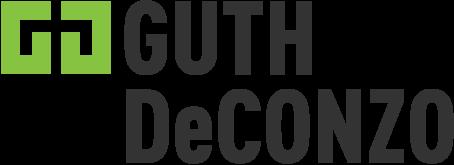
SINCE the time of our establishment, in 1961, our focus as Castel has always been on unwaveringly meeting the requirements of the market and on satisfying our customers, worldwide.
The continuous development of our products – with high levels of automation and technologies made in Italy – has enabled us to gain the trust of our customers as being reliable, which has guaranteed us continuous growth in market share and expansion into new territories.
Our philosophy as Castel revolves around designing an efficient production process and fostering a quality control system that guarantees perfect quality levels for all our products.
We live in an era in which the HVAC&R sector is attentive to the environment and to the use of new refrigerants with low Global Warming Potential (GWP). Thanks to our technology, we at Castel can guarantee full compatibility with all new refrigerants, as all our components are environmentally friendly.
Our new technological product developments have enabled our components to be used in countless projects with A1, A2L and A3 refrigerants (HFC, HFO and HC), as well as with CO2. Indeed, we are recognized by the market as being the only company worldwide that can provide a complete
solution with a complete range of products for HFO and CO2 refrigeration systems.

In the last few years, we have gained the trust of companies in the GCC region. We have experienced excellent growth in the territory, especially in the GCC region.
In order to continue our philosophy – of being near our partners and growing together – we have decided to have a direct presence in the region with our new subsidiary, Castel Gulf DMCC, enabling us to give better support to all our partners and end users of our products.
In addition to providing an efficient commercial supply, the subsidiary will enable technical engineering support to facilitate the GCC region market’s transition to being a more ecological one, with low-GWP and low-energy consumption products, while not having a particular impact from an economic perspective.

The opening of our office in the UAE in 2023 is part of the strategic actions we have undertaken as Castel to enhance relations in the Middle East – in particular, the GCC region.
The Castel Gulf DMCC sales office is located in Dubai’s prominent Jumeirah Lake Towers (JLT) area, and the warehouse is in Dubai’s Jebel Ali area, which contains stocks of our complete product range to satisfy all the needs of our partners.

The new subsidiary aims to guarantee an immediate response and the best service commercially and technically available for the entire region.
We at Castel believe the decision to have close commercial and technical proximity to customers in the region is a winning formula for establishing a mutually lasting and profitable longterm relationship with our historical partners. This will secure Castel’s ever-growing presence in the region.
DMCC, we are aiming to enable better technical engineering support, among other benefits, for our business partners and for end users of our products
Salah AbdelGhany, Castel Gulf DMCC General Manager,
1) Arabic speaking sales Engineer mechanical Engineer with a Minimum of 2 years UAE Market experience. UAE Driving license is a must
2) Bilingual (English & Any Indian Language) Sales Engineer Mechanical Engineer with a Minimum of 2 years UAE Market experience . UAE Driving license is a must
3) Tagalog Speaking Administrator Excellent in English communication skills with 3 years’ Experience in the UAE market .








4) Technician & electrician for HVAC & (electrical, Technical, Controls) Preferred candidates from Nepal, India, Philippine, Bangladesh

















For all your headhunting needs, please contact: +971 50 3580708 or email alissa@careersbay.com





www.careersbay.com













The numbers support the ascendancy of the air treatment market – for more reasons than one, says Indu Revikumar, Features Writer, Climate Control Middle East

ACCORDING to a research report on the air treatment market by the Exactitude Consultancy, the size of the global air treatment market will increase from USD 20.42 billion in 2022 to USD 41.16 billion by 2029, resulting in a compound annual growth rate (CAGR) of 8.1% between 2023 and 2029.
As if presenting a microcosm of the global growth, Mattia Nuti, CEO & Founder, Vortex Biotech, says, “Speaking on Saudi Arabia, though it has a population of around 33 million people, and while it is not as advanced as the UAE in terms of Indoor Air Quality (IAQ), increasing attention and investment can be observed in this area in recent years.” He points out to how since 2021-22, there has been an increase in awareness and demand for air quality monitoring and treatment solutions in the UAE, which is the most advanced country in the GCC region. Interestingly, he says, other countries in the region, which are not as aware of the issue as the UAE – namely, Kuwait, Qatar and Saudi Arabia – are also following suit. This trend, he adds, also suggests that the market for air quality solutions and air treatment equipment would experience growth in the region.
Shubhendu Srivastava, Executive Vice President, Desiccant Rotors International (DRI), shares a similar perspective on the market size. He notes that the air treatment market in the UAE and Saudi Arabia continues to evolve rapidly as people realise the benefits of fresh air infusion, IEQ and energy efficiency. DRI, he says, has supplied to many prestigious projects in the region, notable among which are the Dubai Expo project and the Museum of the future, in the UAE. In Saudi Arabia, he says, the company has growth plans in place and has supplied to the upcoming Red Sea project, among others. “Our applications are focused on fresh air treatment and energy recovery and help commercial installations recover a huge amount of savings in energy costs,” he says. “Our recent offerings in Indirect Direct Evaporative Cooling (IDEC) systems are a notable game changer and offer a drastic reduction
in operational costs (80%) compared to conventional air conditioning. The IDEC product provides cooling solutions for large spaces in warm and tropical weather conditions.”
Samiullah Khan, CEO, Saif Air Technologies, weighing in on the trend, says that in the post-pandemic era, there is a priority to ensure that the air we breathe is free from viruses. However, informed and knowledgeable clients demand reductions in CO2 and VOC levels, in addition to PM2.5 and PM10, he points out. “To achieve this, we use an air-purification system, called Airocide, a bio-conversion chamber developed by NASA that eliminates all pathogens and VOCs,” he says. “Unlike filter-based systems, Airocide does not require filters and is commercially available. Additionally, we use a technology called HEECO2R to produce 0 ppm CO2 air in centrally cooled buildings. This technology uses pressure swing adsorption to remove CO2, VOCs and excessive humidity from the air.” Khan adds that HEECO2R, which is the only air treatment system designed and developed entirely in the UAE, was created to meet the GCC region’s environmental standards.
Nuti, for his part, highlights how Vortex Biotech has recently implemented a significant project with its VLED technology in the region. The technology, he says, utilises UV-C light to disinfect indoor air within HVAC systems, effectively eliminating bacteria, viruses and mould. “By ensuring constant disinfection, VLED creates a healthy and safe indoor environment, combating poor air quality caused by circulating germs,” Nuti says. “Patients can benefit from this technology, as it helps prevent the spread of infectious diseases in enclosed spaces.”
While elaborating on the market preferences, Nuti notes that Vortex Biotech has supplied the VLED to many large projects – to hospitals and buildings – in the UAE and Saudi Arabia in a short span of time. Vortex Biotech is a startup founded in 2021, he says, adding that the company had already received pre-orders worth USD 700,000

and education. “We have installed our equipment in the Hotel Treppan – a four-star hotel – resulting in improved air quality and a 30% reduction in electricity bills,” he says. “We partner with the Emirates Green Building Council to study and improve air quality in approximately 30 national schools. We are also working with the Environment Center for Arab Towns (ECAT) on a project focused on air quality and sustainability.”
Srivastava says that such is the increase in awareness on IAQ that clients request units equipped with necessary sensors and easy integration with Building Management Systems (BMS) and other software. Srivastava highlights the growing importance of IoT in current and future equipment. Adding to what Srivastava said, Nuti says that IEQ needs to be looked at from the perspectives of monitoring and control. Many companies, he says, provide sensors for air quality monitoring, but there is a limitation on the parameters that can be checked, namely real-time monitoring of viruses, bacteria and mould. “Currently, there is no technology available to tackle this issue,” he says. “On the controls side, the market offers various air filtration and disinfection technologies, but most have side-effects or are ineffective. UVC light technology is an effective option, but it also has side effects on humans and is less effective in air-handling units due to high airspeed.”
Srivastava says DRI is continuously evolving its product offerings to meet customer demands, in the wake of increase in awareness about IAQ. “We offer complete solutions for ventilation, including Treated Fresh Air Units and Energy Recovery Ventilators, which help maintain good IAQ while providing energy savings in a single unit,” he says.

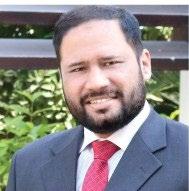
IAQ is still crucial, with approximately seven million deaths attributed to it (poor IAQ) each year,” he says. “As for Vortex Biotech, we are constantly trying to enhance our product offerings to provide a complete solution for ventilation, maintaining good indoor air quality, and energy savings in a single unit.”
Nuti says that when it comes to air treatment, the GCC region market is primarily focused on cost. “One of the reasons could be that the market is dominated by people who come to the region to make money in a brief period and then leave,” he says. “Since there is no social security, the market is tailored to meet the needs of this group. Therefore, products with features other than cost are not a priority. The market is fast paced, but little emphasis is on other costs, such as quality.”
Nuti says there is significant demand for low-maintenance technology in the region that is easy to install. “This demand may create an opportunity to add value to existing projects without requiring significant changes to their design,” he says. “The challenge in adding new innovative technology to existing projects is in ensuring compatibility and avoiding disruption. However, there is potential for innovation by developing technologies that add functionality and have multiple applications. This retrofit market presents a promising opportunity for those seeking to capitalise on these needs.”
by December 2022. “We have started installing the device since late February, this year, and are currently studying 12 hospitals for deployment,” he adds.
Khan notes that the air treatment market has grown substantially, especially in the context of the top three sectors of health care, hospitality
Nuti has a different opinion on awareness for better IAQ in the postpandemic phase. He notes that the heightened awareness was due to the pandemic, but in early 2022, after the threat of the virus subsided, people are no longer concerned about COVID and have become less focused on IAQ. “However, it is important to note that
When it comes to retrofitting, Khan says that at a macro level, HEECO2R replaces the outdated and inefficient FAHU in centrally cooled buildings. Indeed, he is convinced that HEECO2R is the best deep-retrofit solution available in the market today. Using pressure swing adsorption technology, it produces 0 ppm CO2 air and treats the air to remove volatile organic compounds and excessive humidity, he says. The technology meets the three pillars of sustainability: People, planet and profit, he says. Additionally, he says, it is scalable and improves IAQ, eliminates Sick Building Syndrome, reduces the heat island effect and decreases HVAC-related electricity consumption by approximately 40%.


Decarbonising of buildings and improving occupant health are part of a regional consciousness, backed by government regulation and an optimal atmosphere for product development, says Indu Revikumar, Features Writer, Climate Control Middle East

GIVEN the frigid conditions and, lately, the demand for cool air in summers, the HVACR industry is vital in Scandinavia. The industry, in turn, has risen to the occasion through providing solutions for maintaining optimal indoor temperatures, proper ventilation and reliable refrigeration. And in providing all these, it has done so in as energy efficient a manner as possible.
In recent years, the Scandinavian region’s governments have implemented various measures to promote sustainable and energy-efficient solutions, resulting in a shift towards reducing carbon footprint and low-power-consuming HVACR systems, and persuading the populations towards more sustainable practices, including the use of renewable sources of energy.

Whilst Scandinavia takes the lead in many government-related interventions, there is also the factor of aligning with what’s happening in the larger Europe region. A recent regulation relating to accelerating the deployment of renewable energy within the European Union came into force on December 30, 2022, in light of the fuel crisis engendered by the war in Ukraine and its impact on the EU’s energy supply and energy prices. The regulation – (EU) 2022/2577 – sets deadlines for permit procedures related to specific solar energy equipment, upgrading existing facilities for renewable electricity and installing heat pumps.
Matthew Dunk, Sales Director, Buildings, Middle East & Asia Pacific, of Denmark-headquartered Frese A/S, says:
“There is no one solution to the energy crisis. European countries are adopting a mix of energy sources to reduce their dependence on fossil fuels. Whilst the fuel crisis with Russia has caused shortterm cost issues, there is a long-term push by governments to phase out fossil fuels. There is also a significant focus on developing technologies that can harness renewable sources like wind, solar and hydropower. The goal is to reduce the usage of fossil fuels by 2050 through legally binding targets. This has opened opportunities to develop newer, more efficient technologies such as modern nuclear energy stations. The drive towards renewable energies is not just a response to the current fuel crisis but a long-term commitment to sustainability.”
Pointing to a landmark government intervention, Ziad Al-Bawaliz, Regional President, Danfoss Turkey, Middle East and Africa, says that Scandinavian countries follow the F-Gas Regulation, as is the case for the rest of the European Union. “The F-Gas Regulation stipulates a phase-down of HFCs, meaning that refrigerants with a high Global Warming Potential (GWP) are particularly under pressure,” he says. “It also sets specific GWP limits, driving the market towards low-GWP and natural refrigerants in certain applications. Currently, the F-Gas Regulation is being revised. We will certainly see a further push toward natural and ultra-low-GWP refrigerants.”
Hans-Olof Karlsson Hjorth, Expert in Sustainable Construction and Energy, Boverket – National Board of Housing, Building and Planning, Sweden, is representative of the mindset and green consciousness of European governments, including those in Scandinavia. He says the Scandinavian countries, either as a part of the Union or as having special agreements with the Union, are obliged to follow the directives and regulations from the Union. “As it is the national competence to write the construction codes, the different countries within the Union regulate what demands could be put on the distinct functions in the building, such as fresh air or cooling,” he says. The Nordic/Scandinavian countries, Finland
and Iceland, have a long-standing relationship of working closely with each other, he says. And the Scandinavian Federation of Heating, Ventilation and Sanitary Engineering Associations in Denmark, Finland, Iceland, Norway and Sweden (SCANVAC) has jointly collected the regulations and guidelines for ventilations applicable in the different countries, he adds.


Dunk speaks of a global focus on reducing energy consumption and achieving net-zero-carbon emissions. “It is particularly sharp in Europe and Scandinavia, due to strict government regulations,” he says. “Currently, most products are manufactured and designed, focusing on energy efficiency. There is also heightened importance for innovative energy-efficient solutions in the GCC region, emphasising maximising Delta T in buildings. We also work with District Cooling companies in the UAE and Qatar to enhance energy efficiency and maximise Delta T in their systems.”
Dunk says the construction industry in the GCC region is experiencing a shift towards sustainability and ecofriendliness, and it is evident from the increased use of green building materials and the incorporation of energy-efficient solutions. Additionally, he says, construction projects also focus on social responsibility and community impact. These trends are essential for the long-term success and profitability of the companies, and for the wellbeing of the environment and society.

Underlining the oft-reported Danish reputation for energy efficiency measures and the impact of building codes on energy performance, Al-Bawaliz says: “As a Danish company, we (Danfoss) strive to set a benchmark in our field and engineer tomorrow to build a better future, in line with Denmark’s efforts to promote sustainability. Denmark has worked with energy efficiency measures since the 1970s, and in the 1980s, the Danish GDP increased by over 80% without increasing domestic energy consumption. The Danish Building Code, BR18, contains regulations regarding the energy performance related to major renovations of buildings. Stricter standards stimulate demand for even
better solutions for energy efficiency in buildings. We also help our customers decarbonise through our products and solutions, providing value in an intelligent and cost-efficient way.”

The Scandinavian countries strongly commit to sustainability and energy efficiency, with a greater emphasis on green building practices and the use of renewable energy sources. Furthermore, there is also heightened importance for a healthier and safer indoor environment in the post-pandemic phase. Dunk notes: “As a global manufacturer of energy-efficient valves and controls, we experienced record-breaking success from 2018 to 2021, and the company achieved unprecedented growth. The key to our success has been the focus on energy-efficient solutions and the ability to control the entire production process in-house. With 80 years of experience, Frese has its own R&D and production facilities, allowing us to tackle supply chain issues by relying on our in-house processes in Denmark and maintaining our products’ quality.”
Sharing a similar perspective, Bawaliz says: “In 2022, despite challenges, Danfoss saw robust growth across all regions and segments, with sales reaching 10.3 billion euros, up 36%, and organic growth up 15%. This success highlights the growth potential

in sustainable products and solutions that meet global climate goals. We launched a green growth strategy in April 2022, focusing on sustainability, ESG, decarbonisation, circularity, diversity, equity and inclusion.

Saravanan Panneer Selvam, Senior Regional Sales Director, responsible for the Commercial Building Service business in IMEA, Grundfos, echoes the state of preparedness and resilience when he says: “The pandemic has taught us to manage the business and our teams remotely without losing the agility to wade through rough weather. Post-pandemic, the challenges dealt with are stress, travel and get-together expectations and the ones related to cost management. Though the fears of a recession are fading away, with some major economies showing signs of recovery, it cannot be written off entirely. We need to be prepared for challenging market conditions. Employee motiva-tion is the key.”
Saravanan adds that the company’s customers in the GCC region are always open to newer technologies with value propositions. With increasing awareness and focus on ROI, people are willing to accept a higher price tag, considering medium- or long-term gains. “Our innovative products, like IE5 motors and Magna 3, help our customers
reduce energy consumption and carbon footprints,” he says. “We are even looking at different business models to reduce the customer’s initial investment to contribute towards environmental protection and saving money and energy.”
Adding to the GCC region narrative, Dunk says that like Europe, where there is an emphasis on considering the lifecycle cost of a project rather than just the capital cost, driven by legislation and a desire to reduce long-term operational costs, the Middle East also focuses on initiatives such as District Cooling, driven by legislation and a need to optimise expensive systems. “Energy-efficient buildings do not necessarily cost more, but we need to reevaluate how we cost buildings, considering lifecycle costs rather than the initial capital outlay,” he adds.
The retrofitting drive
Dunk points out to how around five years ago, most of the company’s projects were new buildings and that only 10% accounted for retrofitting. “However, in 2023, we estimate that 40% of our projects are retrofitting projects, while the remaining 60% are new buildings,” he says. “When we talk about retrofitting, we refer to existing buildings constructed 25-30 years ago and requiring upgrades
to improve their energy efficiency and building performance. With advancements in technology, there is a growing demand to enhance the performance of these buildings. In places like Dubai, many large shopping malls have never functioned optimally, leading to an increased appetite to upgrade the systems and improve occupant comfort and energy efficiency.” Dunk highlights how two of the company’s senior team members in the GCC region have recently become certified energy managers to help with these types of projects. “We conduct energy studies and surveys to identify areas where improvements can be made to existing buildings’ performance,” he says.
Echoing Dunk, Bawaliz speaks on the strong nature of the retrofit market in the region. Dubai, he points out, has a serious target for retrofitting existing buildings to reduce the energy intensity of 30,000 buildings by 2030. As a leading energy savings entity, he says, Etihad ESCO is on a mission to make Dubai’s built environment a leading example of energy efficiency for the region and the world. Saudi Arabia, he points out, is on the same path with Tarshid as the National Energy Services Company to catalyse the development of a more energy-efficient Saudi Arabia.
Saravanan says that in the region,
5-6% of Grundfos’ assignments are retrofitting-related, adding that retrofitting, as an activity, possesses immense potential. “Most of these assignments aim to improve energy efficiency and overall product/system performance,” he says. “For instance, Science Based Target initiative (SBTi) concept is gaining momentum in this region, and more and more corporates are stepping in to contribute to a better environment. Measuring the success of these initiatives is the key and remains a reasonable challenge at this point. Organisations in different walks of business have diverse ways to measure, which offer tremendous opportunities for business growth for us in the GCC region.”
By way of giving a flavour of retrofitting activity in Scandinavia, Hjorth says that about three per cent of the Swedish housing stock is undergoing major renovation yearly. “Ninety-four per
cent are untouched,” he says. “It could be much better, and the future revision of the EPBD has some harsher regulations around the corner for this 94%.”

Shift in focus towards Saudi Arabia, Egypt Saravanan says that Saudi Arabia and other oil-based economies are bound to grow exponentially in the coming years, providing many opportunities for HVACR companies in the GCC region. Being closer to the market and easily reachable will play an essential role in the strategy of any organization, he says. “Since the cost effect is the same for similar organisations in business, to provide the products and knowledge within the region, we expect the competitiveness to continue to be similar in the market elsewhere,” he says. “Any growing organisation may need to pay attention to a market like Saudi Arabia, announcing various strategic projects.”
Dunk is equally upbeat about Saudi Arabia. While Qatar has reportedly experienced good growth in the past decade, with a focus on the FIFA World Cup, Saudi Arabia looks to be the place that will boom in the next 10 years, Dunk says. “However, some mega projects are still in their early stages and require more detail,” he says. “The focus also shifts from the UAE and Qatar to Saudi Arabia and Egypt. European companies consider Egypt part of their Middle East region and have seen a surge in mega projects in the last few years.” Dunk says that although Saudi Arabia offers exciting opportunities in the next few years, it is important to note that there are still challenges to overcome in other regions. Nonetheless, he adds, companies should remain focused on staying updated with the latest developments and leverage them to improve efficiency and productivity to stay ahead of their competitors.




District Cooling provider says its Annual General Assembly was also an occasion to elect its Board of Directors, with one new appointment
By CCME Content TeamTHE shareholders of Tabreed, on March 20, approved a cash dividend payment of 13.5 fils per share for 2022. Making the announcement through a Press release, Tabreed said it represents the highest dividend payment to Tabreed shareholders in the company’s 25-year history and marks an increase of 1.5 fils per share on the 12 fils per share equivalent paid to shareholders in 2022.
Tabreed said its Annual General Assembly (AGA), chaired by Chairman Khaled Abdullah Al Qubaisi, on March 20, formally approved the record dividend. Tabreed said it also used the AGA to elect its board of directors, in accordance with the three-year requirement set out in SCA regulations. Eight of the existing board members, Tabreed said, have been re-elected; shareholders confirmed the appointment of one new board member, Dr Alyazia Ali Al Kuwaiti, to the Board of Directors.

Speaking on the occasion, Al
Qubaisi said: “As the UAE prepares to host COP28, Tabreed continues to build on its successful track record of delivering energy-efficient and environmentally friendly District Cooling solutions for customers, supporting their energy sustainability goals. We are proud of our ongoing partnership with customers to reduce energy consumption and carbon dioxide emissions and advance the growth of sustainable smart cities in the region.
“On the back of an exceptional year, we are delighted to issue a record dividend payment, unlocking further value for our shareholders while we continue to benefit people, societies and the environment with our pioneering, reliable and sustainable solutions.”
Khalid Abdulla Al Marzooqi, CEO, Tabreed, said: “Last year, group revenue increased by 13% to AED 2.22 billion, and we reported an EBITDA of AED 1.23 billion, which was an increase of 19% over 2021 – results everyone
in the company can be proud of. As impressive as our financial performance undoubtedly is, at Tabreed we are equally proud of the fact that our operations prevent millions of tons of carbon emissions. Cooling is the biggest consumer of electrical energy in this region, and District Cooling uses approximately half the energy required by conventional methods, so the positive impact of our business benefits everybody, everywhere.
“Tabreed is a most resilient company, and 2023 will be a landmark year for us, as we celebrate being in business for a quarter of a century. It is an exciting time for everyone at Tabreed, as we look ahead to the next 25 years as the world’s leading provider of sustainable cooling.”
In 2022, Tabreed said, it added nearly 55,000 refrigeration tons of new connections in the UAE and across the region, as the company invested in its network of assets in the UAE and Oman, and expanded into new markets.

THE General Assembly of Emirates Central Cooling Systems Corporation (Empower), in a March 29 meeting convened with a quorum of 86.82% of the company’s paid-up share capital, approved the Board’s proposal on the distribution of cash dividends to shareholders in a total amount of AED 425,000,000 (AED 0.0425 per share, representing an equivalent of 42.5% of the company’s paid-up capital). Making the announcement through a Press release, Empower said the dividends are approved for the second half of the year 2022, and are set to be paid to shareholders in the month of April of 2023.
H.E. Saeed Mohammed Al Tayer, Chairman, Empower, chaired the General Assembly meeting, at Habtoor Palace, Dubai, Empower said.
H.E. Ahmad bin Shafar, CEO, Empower, and members of the Board of Directors of Empower attended the meeting, Empower said.
According to Empower, the assembly reviewed the company’s performance and its financial position. The assembly also discussed and approved the financial statements for the fiscal year ending December 31, 2022, which were ratified with the auditor’s report for 2022.
The company’s shareholders approved the General Assembly items, Empower said, adding that Empower is listed under the symbol (EMPOWER) and that the International Securities Identification Number is ISIN:AEE01134E227.
The shareholders also voted and approved the recommendation of the Board of Directors regarding the
suspension of any additional allocation of profits to the legal reserve, as the company’s statutory reserve has reached 50% of its paid-up capital, Empower said.
Empower said it recorded revenues of AED 2,792,539,000 as well as net profits for the owners of the company, amounting to 1,000,567,000 for the year ending on December 31, 2022, representing the highest in the District Cooling industry, with a growth of seven per cent over 2021.
Empower said the distribution of dividend is in alignment with the company’s dividend distribution policy shared with investors that the company expects to pay a minimum dividend amount of AED 850 million per annum in the first two fiscal years, following its listing on the Dubai Financial Market.
H.E. Al Tayer said: “The impressive results achieved by Empower are the result of the vision and directives of His Highness Sheikh Mohammed bin Rashid Al Maktoum, UAE Vice President and Prime Minister and Ruler of Dubai, and the follow-up of His Highness Sheikh Maktoum bin Mohammed bin Rashid Al Maktoum, Deputy Ruler of Dubai, Deputy Prime Minister and Minister of Finance. Empower is moving forward with its expansion, extending the reach of its services and developing its unique business model that enabled it to become the world’s largest provider of eco-friendly District Cooling services. Empower today plays very important role in securing ecofriendly District Cooling services in Dubai as well as in the protection of resources, the environment and the climate at the
local and global levels.
“Our ability to deliver such robust growth rests to a large extent on our expansive world-class infrastructure and our highly automated and efficient plants, with environmentally beneficial nature of Empower’s operations. Throughout our history, we have promoted and optimized the use of energy in the District Cooling industry. We are proud to serve efficient and reliable cooling services while reducing greenhouse gas emissions.”
H.E. Al Tayer thanked the shareholders for their trust and the Empower’s management and employees for their efforts in achieving distinguished results.
On his part, H.E. Bin Shafar said: “The continuous support that Empower has received from our wise leadership since the establishment of the Company until its listing in the Dubai Financial Market was, and continues to be, the contributor for its success in achieving international leadership in one of the most vital and strategic industries in the world. It has also a vital role in the successful privatization program in Dubai, and its presence in one of the most prosperous financial markets at the world level.”
Bin Shafar explained that Empower is grateful to its shareholders who have put their trust in it with certainty that it will continue its growth, prosperity and strong performance, now and in the future. He stressed that Empower will continue to grow in 2023, especially as it is determined to increase its market share within the country, driven by an innovative strategy, and a unique and sustainable business model.
TABREED said it has signed the UAE Ministry of Climate Change and Environment’s (MOCCAE) Climate-Responsible Companies Pledge. Making the announcement through a Press release, Tabreed said that the signing of the pledge is in line with its own broader commitment to achieving Net Zero.

On May 17, 2022, the MOCCAE launched the National Dialogue for Climate Ambition (NDCA), as a platform “to define and raise sectoral climate ambition and advance all-inclusive participation in the ‘UAE Net Zero by 2050 Strategic Initiative’ to meet the country’s international climate commitments, particularly the Paris Agreement”. Stakeholders include many sectors, such as manufacturing, construction, waste, transport, finance, energy and utilities providers.
Subsequently, the ninth session of the NDCA – and associated pledge signing – was held under the theme of ‘Decarbonising the Buildings Sector’, and featured keynote addresses by Her Excellency Mariam Al Mheiri, the Minister of Climate Change and Environment, and Talal Al Dhiyebi, Group CEO, Aldar Properties. Following the speeches, signatories of the pledge, including Khalid Al Marzooqi, CEO,
Tabreed, assembled together on stage to mark the historic undertaking, Tabreed said in the Press release.
Sustainability, Tabreed said, is one of the key pillars it is built upon. The District Cooling provider, added that its relentless pursuit of energy efficiency has resulted in the prevention of huge amounts of greenhouse gas (GHG) emissions.
Al Marzooqi said that signing the pledge is an obvious fit for the company, which has long been known as a champion of sustainability. “It is widely acknowledged that cooling buildings in this region is responsible for the majority of electricity consumption,” he said. “And while we are making enormous strides in generating power using renewable sources, it remains responsible for significant greenhouse gas emissions, so any way of reducing energy consumption has to be a positive. And that’s where District Cooling makes perfect sense, because it’s approximately 50% more energy efficient than conventional methods. Last year alone, Tabreed’s efficiencies prevented the release of nearly 1.4 million tons of CO2 into the atmosphere – that’s like removing 300,000 vehicles from the roads, and we do this year in, year out.”
He added that demand for cooling will increase as the UAE’s population and infrastructure continue to grow, making the case for District Cooling stronger than ever. “Without District Cooling, we simply could not progress as a society,” Al Marzooqi said. “But we need to approach this with sustainability in mind, which is why our business aligns so closely with the country’s wider Net Zero targets, and we have our own roadmap to become completely carbon neutral ourselves by 2050. We wholeheartedly thank and support the UAE’s Ministry of Climate Change and Environment, and signing this pledge is an outward demonstration of our commitment to do everything in our power to ensure a sustainable future for everyone, everywhere.”
Tabreed said that in a further show of its commitment to Net Zero, following the signing of the Climate-Responsible Companies Pledge, it participated in a landmark event hosted by low-carbon energy giant, ENGIE, at Louvre Abu Dhabi, titled: ‘E4 – Defining the Pathway to a Carbon Neutral Economy’.
Hosted for ENGIE’s key stakeholders to engage in dialogue on decarbonisation and the solutions that will help governments, companies and industries to achieve Net-Zero, the E4
event – a first for the Middle East – was attended by industry leaders from the UAE, the wider GCC region countries and from overseas, Tabreed said. The event helped showcase the welldocumented benefits of District Cooling in dramatically reducing emissions related to power generation, and as


one of Tabreed’s majority shareholders, ENGIE continues to add exceptional value to the company through its unrivalled expertise in global energy and sustainability matters, the District Cooling provider said.
During the E4 event, Dr Yousif Al Hammadi, Chief Asset Management
Allied has grown into one of the leading Engineering and Project Management firms in the Middle East, boasting offices in 3 major Countries in the Middle East (Egypt, United Arab Emirates, Kingdom of Saudi Arabia).
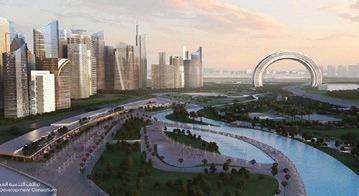
Allied offers full range of Engineering and Project Management services provided by nearly 140 dedicated professionals distributed among Egypt, UAE and KSA.
The company is a multidisciplinary consulting firm and has a track record and specialization in Buildings, Industrial Works and District Cooling and Power Generation Plants.
Officer, Tabreed, delivered a presentation introducing the company to a diverse audience of dignitaries, government ministers and highranking officials, highlighting the company’s environmental credentials with results recently posted in its record Q4 2022 results.

 By CCME Content Team
By CCME Content Team
SAUDI Arabia-based Al Hassan Ghazi Ibrahim Shaker Company (Shaker), which imports, manufactures and distributes air conditioners and home appliances, said it achieved a 19.72% increase in net profits for FY22.
Making the announcement through a Press release, Shaker said it achieved a revenue of SAR 1.04 billion, up 3.44% on FY21, driven by strong growth in the HVAC solutions segment. The company said it achieved a gross profit of SAR 237.64 million, up 10.24% on FY21, driven by higher sales and portfoliomix optimisation. It said it achieved an operating income of SAR 42.36, up 15.62% on FY21, driven by lower impairment loss on trade and other receivables, offset by higher fixed costs. The company reported a net profit of SAR 32.83 million, up 19.72% on FY21, driven by higher income
from operations and lower zakat and tax. It also reported an EPS* of SAR 0.68, up 56.38% on FY21.
• Post-capital reduction in Q2FY22.
• Discontinued operations are excluded from the year-over-year analysis.
Speaking on the performance during the Q4 of 2022, Shaker said it achieved a revenue of SAR 210 million, down 7.43% on Q4-FY21, driven by softer home appliance performance, partially offset by double-digit growth in the HVAC solutions segment. The company said gross profit margin improved by 120 basis points year-on-year (YoY) to 25.4% in Q4-FY21, though, driven by portfolio-mix optimisation and improvement in management of cost of goods sold. The company said weaker performance, YoY, is due to higher finance costs from higher
SIBOR rates, increased selling and distribution expenses, and seasonality trends impacting demand. This was partially offset by lower impairment loss on trade and other receivables, higher net profit from investment in an associate, and lower zakat and income tax expense, the company added.
Shaker declared that it delivered yet another year of growth and profitability in 2022, building on the continued execution of the strategy set out in 2020. Both operationally and financially, the company reported having made significant progress in key areas to position for future growth.
The company said it has successfully cleared its accumulated losses through a capital decrease in the first half of the year, providing a stronger financial foundation for future growth and development. In addition, the company said, it has successfully repaid its long-term debt and maintained profitability and growth, which enabled it to cancel the proposed offering of rights issue shares in Q4 2022.
The company said that during the second half of the year, it successfully divested its holding in “Energy Management Services Emirates LLC (EMS)”, which operates in the UAE, and listed its shares in “New Vision for Electronics and Electrical Appliances (NV)”, as held for sale, which operates in Jordan, as part of Shaker’s continued focus on portfolio optimisation of its core business in Saudi Arabia.
The company said it has also strengthened its long-standing strategic partnership with LG through an expanded supply agreement that includes LG’s complete range of home appliance and home entertainment products.
The company said its commitment
to manufacturing energy-efficient products in the Kingdom has propelled it to comply and surpass the industry’s new SEER standards and emerge as a leader in energy-efficient home appliances and HVAC solutions.

The company said that as a proud supporter of the ‘Saudi Made’ initiative and a leading exporter to more than 20 countries, including the GCC region and Africa, it remains committed to promoting local manufacturing and to driving economic growth in Saudi Arabia through increased utilisation of local content in its supply chain.
In addition, the company said, it has embarked on enhancing its systems and business operations by upgrading its enterprise resource planning (ERP) to S/4 Hana, the latest technology that SAP offers.
Speaking on the occasion of declaring the financial results, Mohammed Ibrahim Abunayyan,
CEO, Shaker, said: “Shaker delivered yet another year of growth and profitability. Despite the challenging market conditions in the second half of the year, we have continued to execute our strategy, optimizing our portfolio, enhancing our operations and strengthening our partnerships. We are proud to be leading the way in energy-efficient home appliances and HVAC solutions, and remain committed to promoting local manufacturing and driving economic growth in Saudi Arabia. With the successful clearance of our accumulated losses, repayment of long-term debt, and maintenance of profitability and growth, we are wellpositioned to continue our journey towards becoming the region’s leading provider of high-quality, energy-efficient home appliances and HVAC solutions.
“As we move forward into 2023, we remain focused on delivering
Event, held in collaboration with REEM RAK, raises awareness on Cooling as a Service, a pay-per-use financial model aimed at increasing efficiency of chilled water plants
By CCME Content Teamlong-term sustainable growth and value creation for our stakeholders. We are confident that our strategic investments and initiatives in diversification, the expansion of our product portfolio, the optimisation of our operations and the enhancement of our digital capabilities will continue to drive innovation and differentiation in the market. We will also continue to prioritize our commitment to the Saudi Made initiative and local content and seek to further strengthen our partnerships with key suppliers and customers. As part of this commitment, we are exploring plans to manufacture all air conditioners sold in the Saudi market locally at the state-of-the-art LG Shaker factory in Riyadh. With a solid financial foundation, a strong balance sheet, a dedicated and talented team, we are well-positioned to capture opportunities and navigate challenges that may arise in the future.”
TAKA Solutions hosted a seminar on Cooling as a Service (CaaS) on March 15 in Ras Al Khaimah. Making the announcement through a Press release, Taka Solutions said it conducted the seminar in collaboration with REEM, the Energy Efficiency and Renewables Office of Ras Al Khaimah Municipality.
According to Taka, the seminar aimed to raise awareness on the concept of CaaS, a pay-per-use financial model aimed at increasing efficiency and eliminating all investment needs and operational costs in chiller plants
The seminar highlighted REEM’s strategic energy vision and how with CaaS, clients can eliminate some of the common financial , technical and operational challenges associated with chiller plants, Taka said The seminar, Taka added, further showcased the scope and benefits of CaaS and featured a testimonial from Taka’s CaaS client, Green Coast Real Estate.
FOR MORE NEWS STORIES, VISIT WWW.CLIMATECONTROLME.COM
FOLLOW US ON LINKEDIN FOR BREAKING NEWS: CLIMATE CONTROL MIDDLE EAST
FOLLOW US ON YOU TUBE FOR VIDEOS: CLIMATECONTROLME
ASHRAE said registration is open for the 2023 ASHRAE Annual Conference, which will take place from June 24 to 28, at the JW Marriott Tampa Water Street, in Tampa, Florida. Making the announcement through a Press release, ASHRAE said early-bird registration will end on April 30.

“ASHRAE’s Annual Conference is the perfect place for built environment professionals to learn new concepts to help improve the design, construction and operation of buildings and systems,” said 2022-23 ASHRAE President, Farooq Mehboob. “It is always wonderful when our members are able to come together to share
experiences and ideas. We look forward to an exciting conference in beautiful Tampa.”
According to ASHRAE, the conference will include tours, social events, award recognitions and a technical programme featuring more than 90 sessions on seven conference tracks. Technical sessions will focus on the urgency of addressing the climate crisis, including measures to reduce human impact on the natural environment and strategies for making the built environment more resilient and sustainable, ASHRAE said.
According to ASHRAE, Conference tracks addressing climate change are as follows:
THE board of directors of Johnson Controls International (JCI) approved a regular quarterly dividend of USD 0.36 per share of common stock, payable on April 14, 2023, to shareholders of record at the
close of business on March 20, 2023. This represents a USD 0.01 cent increase over the previous quarterly dividend, JCI said. The company added that it has paid a consecutive dividend since 1887.
• Pathway to Net Zero and Decarbonisation – Highlights case studies, research, tools and strategies to reduce carbon impact and achieve net zero energy communities.
• Future Proofing the Built Environment – Focuses on innovative technologies and strategies to reimagine the relationship with the built environment in the wake of weather extremes affected by climate change, as well as energy supply disruptions and shortages, methods of designing, constructing and operating buildings and HVAC&R systems for resilience and sustainability.
• Research Summit – Features active research, and the exchange of research findings, critical to the development of the HVAC&R industry and built environment. The track includes a partnership with ASHRAE’s archival journal, Science and Technology for the Built Environment.
According to ASHRAE, remaining tracks are:
• Building Automation and Control Systems
• Professional Development and Education
• Fundamentals & Applications
• HVAC&R Systems and Equipment Fundamentals & Applications
The plenary session will feature a keynote presentation from David Dylan Thomas, Author, Design for Cognitive Bias, and creator and host of The Cognitive Bias Podcast.
During the President’s Luncheon, on June 26, incoming 2023-24 ASHRAE President Ginger Scoggins, will present her inaugural address and share the Society theme for the coming year, “Challenge Accepted: Tackling the Climate Crisis”, ASHRAE said, adding that the 2023-24 officers and directors will also be installed.
According to ASHRAE, the ASHRAE Learning Institute (ALI) will offer full-day seminars, half-day courses and ASHRAE certification exams during the week.
For complete information and registration for the 2023 ASHRAE Annual Conference, ASHRAE urged those interested to visit ashrae.org/2023Annual
AHRI will be hosting the AHRI State Summit, on April 25 and 26 in Albany, New York. Making the announcement through a Press release, AHRI described the event as an excellent opportunity for its members to communicate directly with key New York policymakers about the positive impact of the HVACR industry on jobs and the economy, health and safety, energy efficiency and on the climate.
According to AHRI, the meeting will address topics ranging from decarbonisation to plastics and
EPR, the refrigerant transition, and more. AHRI said it has scheduled several networking events and opportunities to connect with colleagues.
According to AHRI, Senator Rachel May and Todd Kaminski are scheduled to participate. Senator Ray represents Central New York’s 48th District, which includes most of the City of Syracuse, parts of Onondaga, and all of Cayuga Country. She chairs the Senate Committee on Cities 2 and the Legislative Commission on Rural Resources, and is a member of the committees on
A-GAS said an enhanced version of PyroPlas, its proprietary refrigerant-destruction technology, will soon be available in Australia and New Zealand. Making the announcement through a Press release, A-Gas said new staff have been recruited and that it is poised to roll out the latest PyroPlas technology under A-Gas ownership for the first time in the Asia-Pacific region. Customers in Australia and New Zealand will be able to use proven destruction technology, designed and built in their own backyard, the company added.
The newly developed equipment will be able to deal effectively with halons, hydrofluorocarbons (HFCs) and mixtures of all previous generations of used refrigerant, as well as an increase in the prevalence of flammables, the company said.
A-Gas said it has operated PyroPlas for more than a decade to successfully
and safely destroy thousands of tons of ozone-depleting substances at its Bowling Green facility, in the United States. This United Nations-approved TEAP-certified technology delivers the industry’s highest guaranteed and proven destruction efficiency at a minimum of 99.9999%. the company claimed.
It’s just over a year since A-Gas announced the acquisition of PyroPlas to expand its global lifecycle refrigerant management capabilities. A-Gas said its team has taken time to develop the new equipment to give it a wider range of destruction capabilities.
Speaking on the occasion of the release of the new version of the technology, Louise McCann, Group Commercial Director, A-Gas, said: “With the further development of PyroPlas units, we are proud to offer the most complete refrigerant management capability in the world. We are committed

environmental conservation; health; housing, construction and community development. Kaminsky is a member of the Government Law & Policy Practice in Greenberg Traurig’s Albany office. Having served as a New York State Senator, a federal prosecutor and as an assistant district attorney, Kaminsky has deep legal and subject-matter experience in legislative, regulatory and public policy issues, with a particular focus on environmental, social and governance (ESG) matters, AHRI said, adding that he is experienced in advising regulated entities in complex matters before various state agencies. In his role as a New York State Senator, Kaminsky was one of the authors of New York’s Climate Leadership and Community Protection Act (CLCPA) and served as chair of the Environmental Conservation Committee.
to bringing this technology to the AsiaPacific region to provide end-of-life destruction services to our customers.”
A-Gas has been operating in Australia since 1995 and started trading in New Zealand in 2018. A-Gas said it also has a growing business in Asia, with operations in Singapore and Japan, which are considered hubs for activity within this region.
Through its investment in PyroPlas, A-Gas said, it will continue to grow its footprint across Asia-Pacific and beyond by supporting responsible refrigerant recovery practices for the purposes of reclamation or destruction.
KEVIN Faltin, Executive Director, Air Movement and Control Association (AMCA) International, and Francesco Scuderi, Secretary General, Eurovent, announced a three-year Memorandum of Understanding (MoU) between the two manufacturer associations, AMCA said through a Press release.

Eurovent, Eurovent Certita Certification, AMCA International, Asia Air Movement and Control Association (ASIA AMCA) and European Air Movement and Control Association (EU AMCA) agreed to develop and maintain mutually beneficial relationships in support of the fan industry, AMCA said.
According to AMCA, the key areas of cooperation covered by the MoU include:
• Certification of fans destined for airhandling units (AHUs)
• Education and training
• Advocacy
• Standardisation
According to AMCA, the organisations are interested in cooperating:
• On matters related to fan certification with global cooperation
• On matters related to education and training with cooperation in Europe, GCC Region, India and Turkey
• On advocacy issues, with cooperation in Europe, GCC Region, India and Turkey
• On matters related to Standardisation;
the scope of the cooperation includes CEN/ISO/ANSI technical bodies
Opportunities to cooperate in territories other than the aforementioned will be considered in the future, AMCA said.
Faltin said: “Our members have expressed a clear interest in having a single fan certification program. This MoU demonstrates that both AMCA and Eurovent agree.”
Fan certification is a key facet of the MoU, AMCA said. The organisations agree that the fans in the scope of the MoU are those that are intended to be used as AHU components.
Scuderi said: “With this MoU, Eurovent and AMCA want to think big and want to support the fan industry globally, clearly including certification activities in the scope of their future common activities. Fans’ performances will be tested according to the AMCA Publications, and the manufacturers’ facilities will be audited by Eurovent Certita Certification. The fans that are certified will then be allowed to bear the Eurovent Certified Performance or AMCA International marks – or even both.”
In addition, AMCA said, the two organisations agree to provide education and training on the correct application and use of fans, and on the correct interpretation of regulations and testing methods. The organisations agree to host joint events of their widely applauded
seminars, webinars and conferences, AMCA said.

The organisations will also meet regularly to determine advocacy issues of mutual interest and concern in the countries defined by the MoU, AMCA said.
Jürgen Albig, Board Member, AMCA, and Chair, European AMCA regional steering committee, said: “Ensuring the industry speaks with one voice in matters concerning legislation and regulations is key to safeguarding the manufacturers and members of both associations, as well as seeing that the economic and environmental vitality of the continent is maintained.”
According to AMCA, the final key point of the MoU will see that the two organisations commit themselves to provide joint input in relevant standardisation technical bodies (CEN, ISO, ANSI), working groups, advisory groups, etc.
Raul Corredera Häner, President, Eurovent, said: “We want to work together to ensure that the various standards in the industry are consistent, organised and meaningful. Harmonising the standards not only makes it easier for the manufacturers but also for the end users, helping them understand and appreciate that the standards are addressing the same criteria.”
THE CAREL Industries Board of Directors approved the consolidated results as of 31 December 2022. Making the announcement through a Press release, CAREL said consolidated revenues came to € 544.9 million – an increase of 29.6%.
According to CAREL, financial highlights include…
• Consolidated revenues of € 544.9 million, +29.6% compared to 2021 (+26.5% at constant exchange rates)
• Consolidated EBITDA of € 111.7 million (€ 7.5 million from the change in the scope of consolidation due to several acquisitions), +31% compared to 2021
• Consolidated net income of € 62.1 million, +26.6% compared to 2021
• Negative consolidated net financial position of € 95.8 million
• Proposed dividend of € 0.18 per share (20% increase compared to 2021)
said: “In a scenario as complex as the one of the last three years, the Group expressed all its ability to adapt to unexpected situations and sudden changes. The year 2022 ends with record-breaking consolidated revenue growth close to 30% (+18% organic), which is even more significant when added to the +27% recorded in 2021; this result, also thanks to the operating leverage factor, was reflected in the profitability, understood as EBITDA as a percentage of revenue (EBITDA margin), which stood at 20.5%, slightly higher than the previous year.
“Growth and profitability positively impacted the robust cash generation, part of which was used for the development of M&A activity. Four transactions were completed during the year, enabling CAREL to strengthen its national and international presence in key sectors such as ventilation, sensors and services.
Compact and the recognition by several ESG rating companies of the improvements achieved during 2022. These improvements have enabled the Group to be included in the ‘ESG leader’ category by MSCI, one of the world’s leading ‘ESG rating providers’.
• Improvement in the scores of all the main ESG ratings (MSCI,
Sustainalytics, CDP) Francesco Nalini, CEO, CAREL Group,
The performance just mentioned is part of a strategic framework increasingly oriented towards a sustainable vision of success, as evidenced by the adhesion to the UN Global
CAREL launched the iJS range of electronic control devices for scientific applications, developed to meet the challenges of the cold chain for the management and storage of medicines. Making the announcement through a Press release, CAREL said the scientificmedical market is in continual expansion, and refrigeration applications require systems that can ensure the correct temperature conditions throughout the useful life of medicines.
As scientific applications require refrigerated units that can guarantee the highest reliability in storing the products in the specified conditions, it is crucial to manage all possible situations in which the temperature is not within the designated compliance limits, CAREL highlighted. Moreover, most scientific/medical
regulations require the minimum and maximum temperatures reached inside the unit to be recorded at different intervals. The new iJS technological platform has been designed to meet these precision and reliability requirements, CAREL said, adding that the control devices are backed by its 30 years of know-how in the refrigeration control business.
According to CAREL, in order to make user interaction with the controller simpler and more intuitive, the solution can be customised in terms of aesthetics and of features. The aim is to maximise reliability and performance, with specific solutions for energy saving, CAREL said, adding that the iJS also features complete management of a backup battery for operation even during blackouts, control of variable-speed
The year 2022 was, therefore, a complex but rewarding year and marks a substantial doubling of the size of CAREL, compared to 2018, the year of listing. In less than a five-year period, we have succeeded in becoming bigger, more resilient, efficient and sustainable and can, therefore, proudly celebrate our first 50 years. In 2023, in fact, CAREL will turn half a century old, half a century of innovation, development and growth. Half a century that does not represent a point of arrival but a starting point to take up and win the challenges of tomorrow.”
compressors via serial line, management of modulating devices to improve energy efficiency, and humidity control for the highest quality product storage.
CAREL said ease of use is also improved by connectivity via app, allowing the temperatures to be recorded and monitored, as well as realtime interaction with the controller. The built-in connectivity options also guarantee prompt remote service and complete reports on storage temperatures, through direct connection to supervisors or the cloud via RS485 with standard Modbus protocol, CAREL added.
According to CAREL, the ability to reach very low temperatures, even below -50 degrees C, a requirement in the scientific refrigeration market, is made possible by the use of two circuits in cascade, in which the first-stage evaporator is coupled to the second-stage condenser. CAREL said dedicated logic is available on the iJS to manage both circuits simultaneously, as well as the stage activation priorities and the related alarms. iJS, CAREL added, is also compatible with temperature probes featuring measurement ranges suitable for “ultra low temperature” applications.
DANFOSS said strong 2022 results demonstrate the huge growth potential in products and solutions that contribute to meeting global and regional climate goals.
Making the announcement through a Press release, Danfoss said sales grew 36% compared to 2021. Organic growth was 15% with EBITA margin reaching 11.9% in 2022, the company said. This is combined with a strong free operating cashflow before M&A of EUR 465 million, an increase of 16% compared to 2021, Danfoss said. After continued high levels of strategic investments in innovation, production capacity, digital transformation and regional growth initiatives, EBITA increased 26% to EUR 1,224 million, compared to 2021, Danfoss said. Earnings were affected by the exit from Russia and the creation of Semikron Danfoss and driven by the higher topline and continued traction in managing sourcing, factory performance, and pricing, the company added.
Kim Fausing, President & CEO of Danfoss, said: “Danfoss is better positioned for growth across all regions than we have ever been. Our sales are almost distributed evenly across the Americas, Europe and Asia, with significant opportunities in all regions. As an example, we increased our sales significantly again this year in North America. With our record levels of
investments in production capacity, regionalization and digital solutions, we are targeting to further improve the service to our customers globally.”
Danfoss said it launched its Core & Clear 2025 strategy, a green growth strategy, in April 2022 with the aim of ensuring further investments in strengthening the company’s three business segments and sustaining strong application knowhow, sustainable innovation and leading positions.
Fausing said: “By increasing innovation spend by 39%, we are again demonstrating our commitment to offering best-in-class technology and solutions. We continue to invest in technologies for sustainable data centers, the fast-growing market for heat pumps and energy efficiency solutions, autonomous vehicles, the electrification of machines and marine vessels, and mobile machinery as well as Power-to-X and battery energy-storage systems. Finally, it was a true highlight to launch Semikron Danfoss in August and, thereby, establish a leading position in power electronics and electrification.”
Danfoss said it is determined to decouple its carbon impact from its own business growth with technologies for energy efficiency, sector integration, linking various energy carriers and electrification. Adjusted for acquisitions, Danfoss said, it delivered a seven per cent decrease in scope 1 and 2 emissions in 2022, while

growing 15% organically. At the same time, Danfoss said, it is taking critical steps towards promoting Diversity & Inclusion through global employee resource groups.
Fausing said: “Our results are truly driven by our high-performing diverse teams across the world. We are taking critical steps to move the needle on Diversity & Inclusion, and it’s been great to follow the growing engagement across the organization. In 2022, we faced a number of challenges, and I am proud to see how we worked together with our customers and partners to handle those challenges best possible. Results are created by people. We are now close to 42,000 people in Danfoss, and I would like to thank all my colleagues who made our results possible. Together we build a better future.”
According to Danfoss, in 2022…
• Sales increased 36% to EUR 10,256 million (2021: 7,539 million), corresponding to a significant organic growth of 15%.
• Investments in innovation (R&D) increased 39% to EUR 457 million (2021: 328 million), corresponding to 4.5% of sales (2021: 4.4%).
• Investments (CAPEX), excluding M&A, increased 44% to EUR 531 million (2021: 368m).
• Operating profit (EBITA) increased 26% to EUR 1,224 million (2021: 969 million), leading to a strong EBITA margin of 11.9% (2021: 12.8%).
• Free operating cash flow after financial items and tax (before M&A) increased 16% to EUR 465 million (2021: 401 million).
• Net profit reached EUR 683 million, up 8% (2021: 631 million).
• Scope 1 and 2 emissions decreased seven per cent (2021: 3%) when adjusting for the 2021 acquired hydraulics business.
• Lost Time Injury Frequency (LTIF) ended at the record-low level of 1.6 (2021: 1.7).
• 41,928 employees (2021: 40,043).
• 21% women in leadership positions (2021: 20%).

installation and maintenance, AHRI said through a Press release.
development is another area with which government can be of assistance.”
AT a meeting today with key climate officials at the White House, America’s heat pump and heat pump water heater manufacturers reiterated their support for positive climate action, while urging strong White House commitment to addressing consumer demand, affordability and stressing the need for the skilled workforce required for heat pump
“Our members welcomed this meeting today, and they are looking forward to working with the White House to ensure a robust demand for energyefficient heat pumps and other innovative technologies,” said Stephen Yurek, President and CEO, AHRI. “Our members produce the most innovative, energyefficient equipment available anywhere in the world, but they need government assistance to educate consumers on the benefits of heat pump technology and to issue timely guidance on IRA tax credit and rebate programs to help make this technology affordable for everyone. Furthermore, because of the sophisticated technology involved, heat pumps require highly skilled installers, so workforce
JOHNSON Controls (JCI) said it has invested in its collaboration with the International WELL Building Institute (IWBI) to strengthen its commitment to healthy building solutions for both its employees and customers.
Making the announcement through a Press release, JCI said its designation as a WELL Enterprise Provider (EP) helps customers meet their business objectives in areas such as ESG reporting, human and social capital management, and workplace strategy and policy. As a WELL EP, JCI said, it will expand on its existing building certification consulting services to
incorporate WELL certification and ratings into its offerings.
“Now more than ever, ensuring that our indoor spaces are healthy is a critical business need – especially as our customers manage hybrid work models,” said Tyler Smith, Vice President, Healthy Buildings, Johnson Controls. “Partnering with IWBI to advance the WELL Building Standard supports our holistic approach in creating healthier and safer environments that cut building costs, raise productivity and deliver on sustainability goals. We look forward to leveraging our new WELL EP designation to help our customers realize
AHRI said that even as they expressed overall support for White House climate action, its members, in attendance at the meeting, encouraged officials to bear in mind that while many climate zones in the United States are suited to a switch to today’s heat pump technology, in colder climates, today’s heat pumps can either be used as a sole heat source or be paired with a gas or oil furnace or boiler for the coldest days. For those areas of the country, AHRI said, manufacturers are working diligently to perfect what are known as “cold-climate” heat pumps, which could in the future replace hybrid heat pump/gas systems, and are partnering with the Department of Energy on research to that end.
Finally, as government officials grapple with equity issues, costs – both for equipment and for the energy that powers it – must be taken into account, as government policies and incentives are discussed and implemented to ensure this technology is affordable for everyone.
the business value of operating buildings that prioritize health and wellness.”
Jessica Cooper, Chief Product Officer, IWBI, said: “In leveraging and engaging in WELL, Johnson Controls is able to drive organizational returns while also integrating evidence-based building strategies that advance health and wellbeing. We are thrilled to have Johnson Controls – a marked industry leader in transforming the built environment –onboard as a WELL Enterprise Provider, deepening its commitment to creating people-first places and helping others do the same.”
In April 2021, JCI said, it announced a global relationship with IWBI to accelerate the reinvention of healthy buildings through advanced technology development, and outcome-based planning and best practices that improve the health and safety of people in buildings and communities. In addition to certifying its headquarters facilities, it said, it has committed to embedding the programme into its organisation to bring the WELL Building Standard to its global customers.
market is opening up new possibilities, industry players say
By CCME Content TeamCHINA’S HVAC market is well placed to thrive with plentiful business opportunities, said Messe Frankfurt (Shanghai) Co Ltd and CIEC GL Events (Beijing) International Exhibition Co Ltd, organisers of ISH China and CIHE –China’s international trade fair for heating, ventilation, air conditioning, sanitation and home comfort systems, from May 11 to 13, at the China International Exhibition Center (Shunyi Hall), in Beijing.
Manufacturers have been actively developing energy-efficient HVAC solutions, in response to the Chinese government’s initiatives on sustainable development, the organisers said through a press release. With the presence of leading global and domestic brands featuring their innovative solutions and products, the lineup of international pavilions and specialised areas will act as the highlight of ISH China & CIHE 2023, the organisers said.
Focusing on three major themes –Energy, Water and Life, which are in line with China’s green initiatives and energy infrastructure optimisation targets, more than 1,300 exhibitors will showcase the latest HVAC, including smart heating; plumbing; and home comfort technologies and products across 106,800 square metres of exhibition space, the organisers said.
As China’s latest national policies underline the green economy, the accelerating growth of the HVAC market

sees new business opportunities for industry players, who are prepared to showcase their latest products and innovations to professional buyers, the organisers pointed out, adding that a number of leading companies and brands worldwide have confirmed their participation in the 2023 edition, which include: AMA&HIEN, Amitime, Amnesty, ARODD, BDR, Beigao, CALEFFI, DA, Danfoss, Devotion, Electrolux, Fangkuai, GMICÖU, GONGDA KEYA, GREE, Grundfos, Gude, Haier, Hailin, Hnbwrn, Hongyue, Huadehuamei, Huamei, Inovisen, JESDY, Kaaniche, Kenuo, Kingfore, Kiturami, Leo, Lonpend, Mayair, MICOE, Midea, Naturaquell, Nedfon, New Energy, Nobana, NORITZ, OUTES, PHILIPS, PHNIX, POWERWORLD, Resideo, Rinnai, RUIGE, RUNA, Shengxu, Shimge, Shinco, Shiteng, SHUANGLIANG, SIEMENS, Snowman, Solerad, ST. LAWRENCE, Suming, Tasan, Tongfang Smart Energy Saving, Tongli, Towngas Smart Energy, UNBEATABLE, Vanward, Walker, WDK, Wellhausen, Westone, WILO, Xinhuaxing, Xinxing, YORO and YUQ.
According to the organisers, the events will see a strong line-up of pavilions and specialised display areas to showcase the latest innovations and technologies.
This year, the German Pavilion, Canada Pavilion, Overseas Area, Zhejiang Pavilion, Water Pump Area and Clean Energy District
Heating Area will be the major highlights of ISH China & CIHE, they said. Supported by the Federal Ministry of Economic Affairs and Climate Action (BMWK), the German Pavilion will continue to be the key feature of the fair, the organisers said. The new Canada Pavilion will present the latest Canadian advanced manufacturing technologies and applications to meet the specific demands of the Chinese winter, they said. Furthermore, following its success in the 2021 edition with over 100 domestic exhibitors, spanning 10,000 square metres of exhibition space, the Zhejiang Pavilion will once again feature this year with product showcases, including HVAC, sanitation and plumbing products, the organisers added.
Located in halls E1 and W2, the Overseas Area has already gathered a number of international brands, including AYVAZ, Broen, CALEFFI, EMS, Fondital, Heatmiser, KMC, Nuova Imas, Polidoro, Rima, Sermeta, Vernet, Vexve and Zero, the organisers said. The area will also introduce the new Minibox Service Area, which will allow international exhibitors who cannot attend the fair in-person to showcase their products and explore business opportunities online, the organisers added.
Being one of the key components for green heating and cooling, water pumps are again one of the highlighted products at ISH China & CIHE, the organisers said. The Water Pump Area will feature a number of prominent brands within the plumbing industry, including DAB, DAFU, Dooch, Goodpump, Grundfos, HOMA, Hydroo, Kaiquan, Leo, Lingxiao, Minamoto, Nanyuan, Pentax, RHEKEN, SFA, TQ GROUP, Westone and WILO, the organisers said.
With the latest innovations and clean-energy technology showcases adhering to carbon emission regulations, the Clean Energy District Heating Area, organised by the China District Heating Association, will be housed in Hall W3 with renowned companies, including Desource, Diehl, GMSDIP, Gongda Keya, GREEN ENERGY ALLIANC, HDCHIP, Heighten, Huameng, Huizhong, HYTC, JHRJ, Jumo, Kingfore, Lcarbo, Nanjing Jiangu, Nuanliu, Ploumeter, POER, Precise, Revoheat, RUNA, Shuanghe, SHUOREN TIMES, THT, TigerIOT, TOKYO, TSCC, Wukexing, Xingbang, Xinxing Pipes and Younai, the organisers said.
With China’s latest national policies underlining the green economy, the accelerating growth of the HVAC


IEA says the “climate-harming” gases will be completely phased out by 2050, together with the introduction of prohibitions on new HFC-based equipment in a range of sectors, including smaller heat pumps and air conditioning systems
By CCME Content Team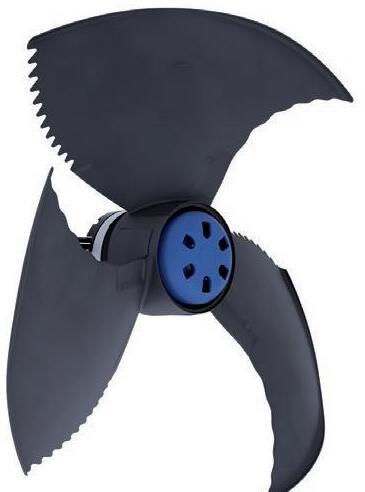

CLIMATE campaigners at the London-based Environmental Investigation Agency (EIA) welcomed the European Parliament’s adoption of a series of ambitious amendments to the European Commission’s proposal on a revised EU F-Gas Regulation, which largely rejected a last-ditch industry lobby attempt to reduce its ambition.
Issuing a Press release on the occasion, EIA said the flagship measures in the European Parliament’s position are an acceleration of the current EU HFC phase-down from 2024 onward, culminating in a complete phase-out by 2050, together with the introduction of prohibitions on new HFC-based equipment in a range of sectors, including smaller heat pumps and air-conditioning systems.
The measures were adopted by the Parliament with 426 votes in favour, 109 against and 52 abstentions, EIA said.
To address concerns that an accelerated HFC phase-out will jeopardise the roll-out of heat pumps under REPowerEU, the European Parliament slightly delayed the Commissionproposed bans on new HFC-based heat pumps and increased the HFC quota during the 2027-29 period, with an annual review to ensure compatibility with REPowerEU, EIA reported.
According to EIA, the European Parliament also voted to direct revenues from the new HFC quota price to promote the uptake of heat pumps, such as upskilling gas boiler installers.
Clare Perry, Climate Campaign Leader, EIA, said: “We urgently need the heat pump roll-out, but it needs to avoid as far as possible the use of HFC refrigerants, or it will lock in

these super greenhouse gases and their ‘forever chemicals’ emissions far into the future. The Parliament position supports leading European heat pump manufacturers that are investing in sustainable natural refrigerant technologies.”
According to EIA, the European
Parliament also voted to include bans on the use of F-gases in other sectors, such as chillers, foams, transport refrigeration and technical aerosols. It further adopted measures to address illegal HFC trade, require mandatory producer-extended responsibility and raise the quota price to €5, with periodic increases over time to match the phase-down steps and ensure a constant revenue stream, EIA said.
Tim Grabiel, Senior Lawyer & Policy Advisor, EIA, added: “The message from Parliament could not be more clear – fluorinated greenhouse gases have no future in a 1.5 degree C constrained world. Today’s vote is also a vote for European industry, which stands to benefit tremendously from early investment in sustainable natural refrigerant alternatives.”
We bring you a collection of some of the most interesting quotes, extracted from articles in this issue. In case you missed reading, we recommend you flip back to take full advantage of the insights and remarks, in the context in which they have been presented.
This is because an implied obligation exists on the part of the main contractor to pursue with every means the rights and entitlements of the MEP sub-contractor, as though the MEP sub-contractor enjoyed a direct contractual relationship with the employer.”
Revised every three years, the current version of ASHRAE 90.1 was issued in January 2023, with its primary focus being to improve energy efficiency in commercial buildings. The impact of the new version will be determined by a U.S. Department of Energy (DOE) study, which will quantify the expected energy savings.”
Today, the modellers that are being inducted into organisations, or the ‘outsourced service providers’, hardly have any construction knowledge and are mere ‘software application handlers’. The result is that the same work is being handled multiple times for QA/QC, and still the end-product – the ‘Model’ – is a disaster, when you view it in the 3D platform.”
In a fully developing fire, as per the standard time temperature curve, after two minutes from the start of a fire, the expected temperature reaches 444.5 degrees C, and at three minutes, this rises to a whopping 502.29 degrees C. This demonstrates that any duct system that has only been tested to 400 degrees C cannot be used as a fire duct and would be expected to fail just after a fire starts.
p17
The opening of our office in the UAE in 2023 is part of the strategic actions we have undertaken as Castel to enhance relations in the Middle East – in particular, the GCC region. p24
Left with no choice, entire communities of people – climate refugees – have already started migrating. This is, indeed, an extreme form of climate injustice, for the countries who contributed the least to the presentday climate crisis have started suffering the most.”



